
The Red Square located just near Moscow Kremlin is central square of Moscow and the main square of Russia and one of its well-known symbols. In Soviet period the Red Square became a place where traditional military parades were held on dates of the main communist holidays: May 1 and November 7. At the Red Square you can enjoy a unique architectural ensemble including the Cathedral of St. Basil (1550s) built in honor of capturing of Kazan by troops of Ivan IV (the Terrible), the monument to liberators of Moscow from Polish–Lithuanian troops Kuzma Minin and Dimitry Pozharsky (1818) and the Our Lady of Kazan Cathedral built in honor of this liberation just during new (unsuccessful) war against Poland (1630s), the History Museum of Russia (1883), Kremlin walls and towers, the Upper Trading Arcades (GUM), Lenin’s tomb where Soviet leaders stayed during military parades (in 1953-1961 Lenin and Stalin lied here together) and necropolis at the foot of the Kremlin wall with graves of the highest leaders of Communist Party and Soviet state (Stalin, Frunze, Kalinin, Zhdanov, Dzerzhinsky, Brezhnev, Andropov etc.).
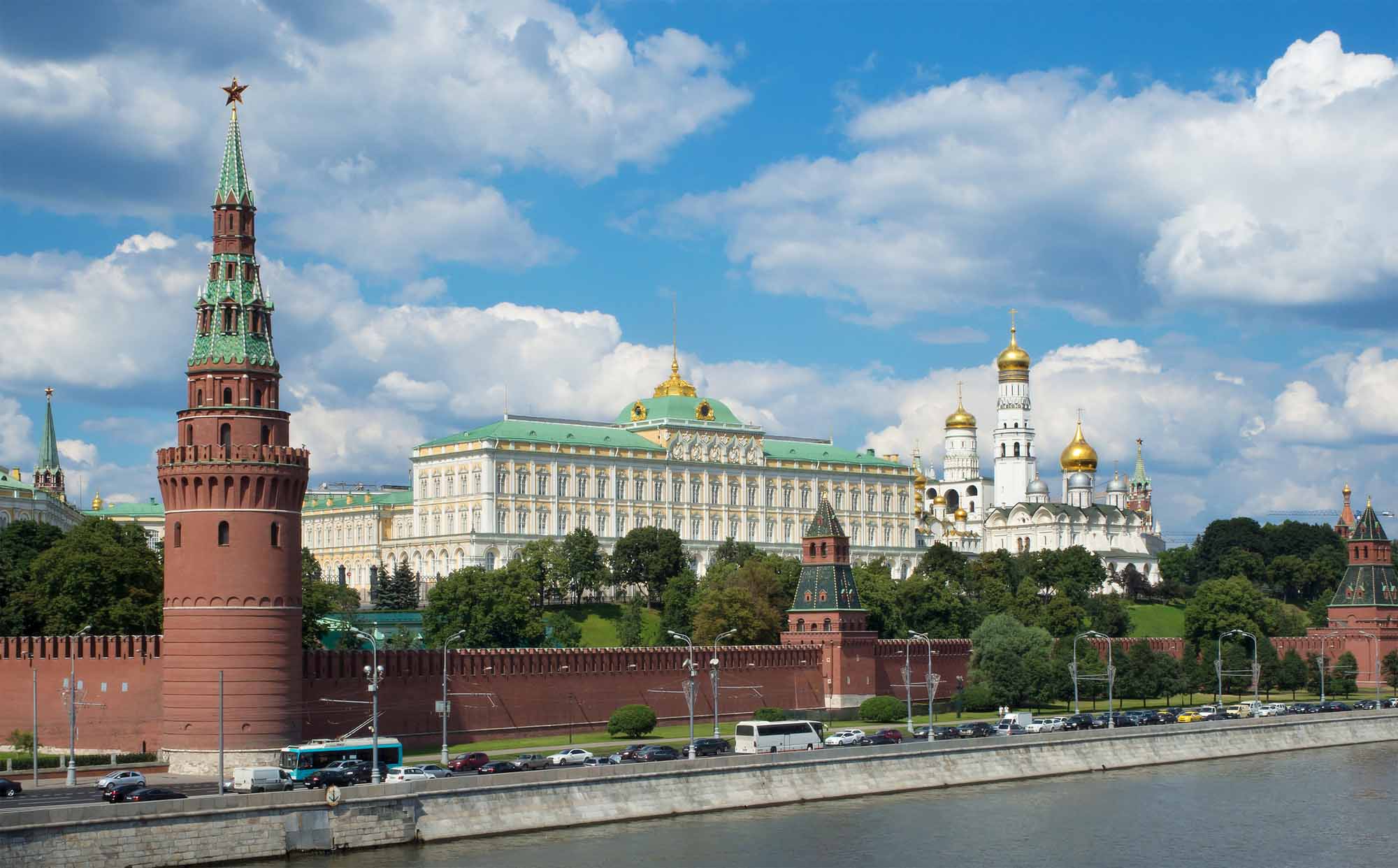
Moscow Kremlin is historical center of Moscow city and also historical and political center of Russian state. You will see the Cathedral Square – breathtaking architectural ensemble of the XV-XVII cc. surrounded by ancient cathedrals (the Annunciation Cathedral where Moscow and Russian grand princes and tsars were baptized, the Assumption Cathedral where they were crowned or the Archangel Michael Cathedral where they were buried). Neare the Cathedral Square there is Bell the Tsar and Cannon the Tsar – stunning examples of casting of the XVI c., Grand Kremlin Palace (residence of emperors and contemporary president’s gala reception quarters), the Senate, the Arsenal and the Palace of Congresses specially built in communist times for XXII Congress of CPSU (1961) where new CPSU program (plan of building of communism by 1980) was adopted. The Armoury Museum located on the Kremlin grounds is one of the oldest museums in Russia with a unique collection of crown jewels, gems, icon covers, crosses, thrones, carriages, coronation robes and the upper clergy vestments, Byzantine cameos and Faberge Easter eggs.
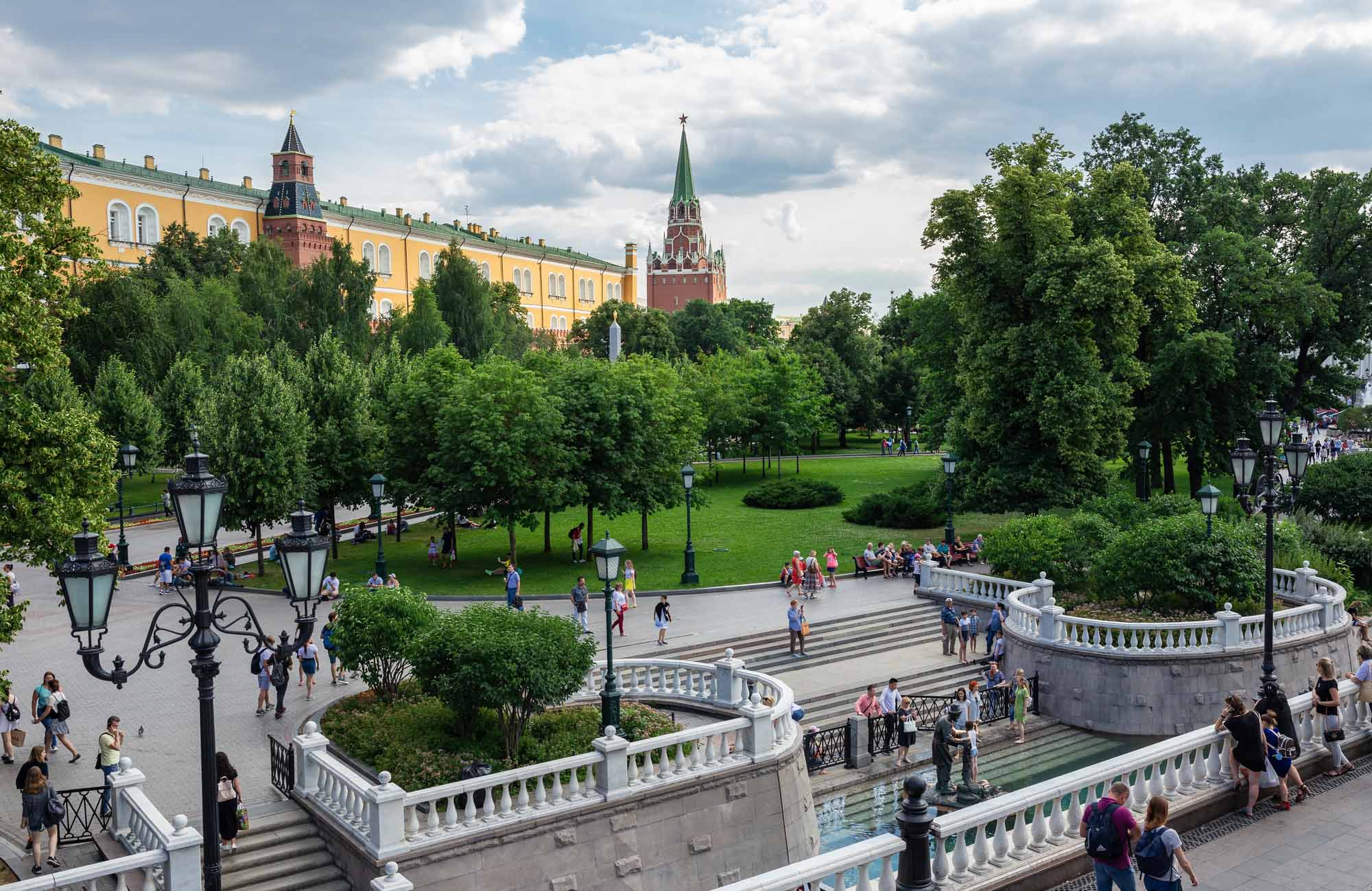
The Alexander Garden is the first urban park in Moscow, laid out in 1819-1822 along the west wall of the Moscow Kremlin on place of XVIII c. bastions and enclosed into a pipe the Neglinnaya River during general reconstruction of Moscow city center after the fire of 1812. The garden is named after Emperor Alexander I. Cast-iron gate and the fence from the side of the Ploshchad Revolyutsii Square symbolizes a victory over Napoleon. The Ruins Grotto under the Arsenal Tower of the Moscow Kremlin constructed of stones of buildings destroyed during the terrible fire is a reminder about tragedy of 1812. Memorial obelisk to the 300th anniversary of the Romanov dynasty was erected in 1914. In 1918 it was converted by the Bolsheviks into the Monument-obelisk to Outstanding Thinkers and Personalities of the Struggle for Liberation of Workers. It became the first monument erected by Bolsheviks. In 2013 to the 400th anniversary of the Romanov dynasty this monument was restored into the original Romanov Obelisk. Nearby you can see another monument dedicated to the Time of Troubles events. It is monument to Patriarch Hermogenes of Moscow, spiritual leader of anti-Polish resistance. In 1960s WW II memorial (the Eternal Flame and the Tomb of the Unknown Soldier) was constructed in the garden. In 1996 during general reconstruction of the Manege Square artificial pond imitating the Neglinnaya River bed with fountains and sculptures by Zurab Tsereteli based on Russian folk tales was created along the fence of the garden.

The Tretyakov Gallery is the largest collection of Russian pictorial art established in 1856 by merchant Pavel Tretyakov. At the Old (historical) Building of the gallery at the Lavrushinsky Lane you can see the XII icons, Baroque portraits, classical canvases, the first Russian veduttas (townscapes), the socially conscious Itinerants, historical paintings, romantic landscapes, paintings of realistic criticism and symbolism. Among the exhibits of the Museum you can see such indisputable masterpieces as the The Trinity by Andrei Rublev, Daughters of Pacini, Giovannina and Amacilia (the Horsewoman) by Karl Bryullov, Portrait of an Unknown Woman by Ivan Kramskoi, Alionushka by Viktor Vasnetsov, Morning in a Pine Forest by Ivan Shishkin, Ivan the Terrible and His Son Ivan by Ilya Repin, The Morning of the Streltsy Execution by Vassily Surikov, The Apotheosis of War by Vasily Vereshchagin, The Girl with Peaches by Valentin Serov, Demon Seated by Mikhail Vrubel and many others.

In the New Building at the Krymsky Val Street excellent collection of Russian “avant-garde” (Aristarkh Lentulov, Natalia Goncharova, Ilya Mashkov, Robert Falk), art of the Soviet period (you can find here both the samples of Soviet official art, for example Stalin and Voroshilov in the Kremlin by Alexander Gerasimov and the actual masterpieces by Pavel Korin, Mikhail Nesterov, Igor Grabar, Tatiana Yablonska and other masters, the art of “Russian abroad” (for example, mysteriously-surreal The Phenomenon by Pavel Tchelitchew), contemporary Russian art.
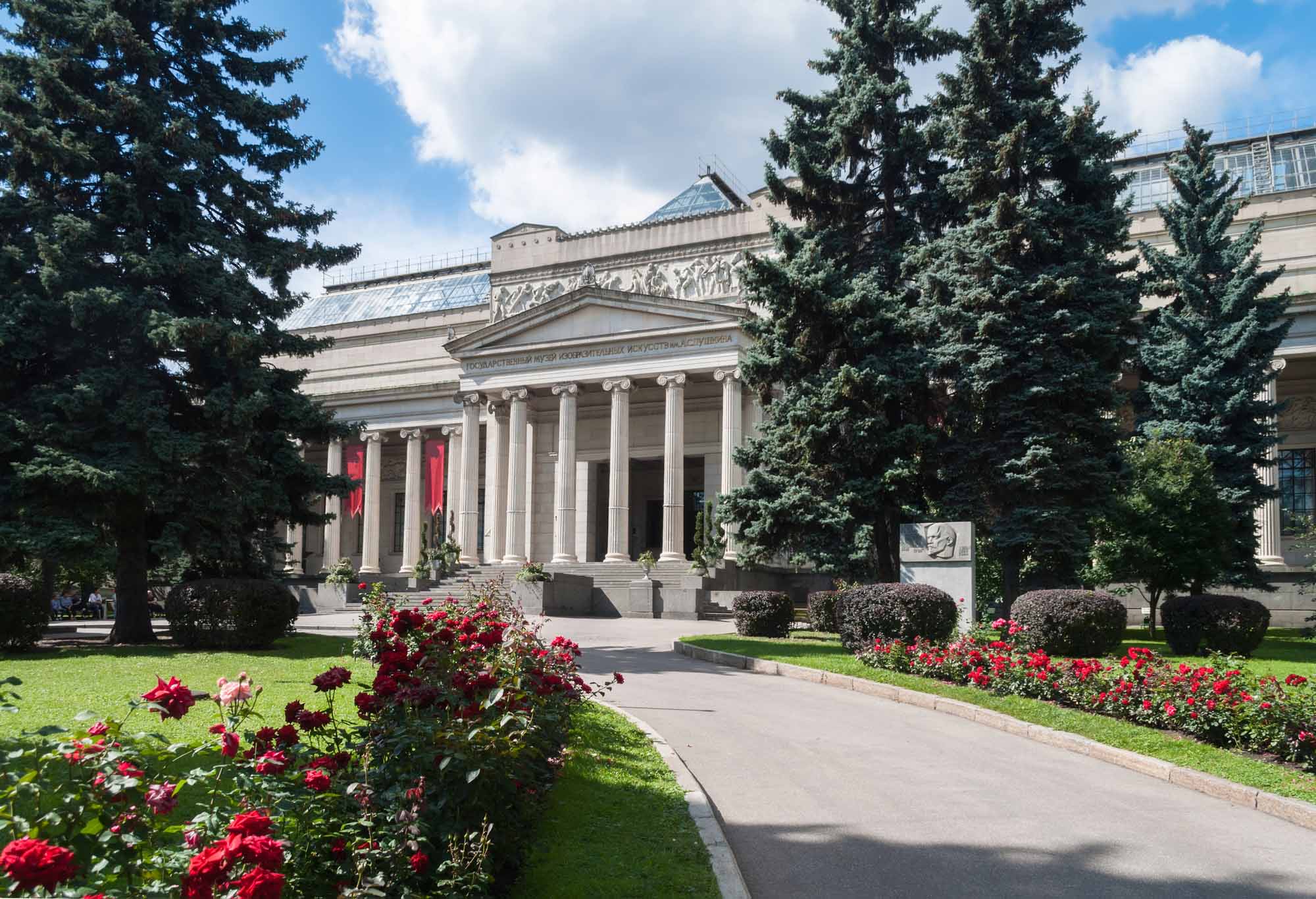
Pushkin Fine Arts Museum founded in 1912 on the initiative of the Moscow University professor Ivan Tsvetaev (father of Russian Silver Age poet Marina Tsveteva) with funds of industrialist Yury Nechaev-Maltsov (among his business was famous cut-glass enterprise at Gus-Khrustalny) is Russia’s the second largest (after the Hermitage) collection of Western European art. At the Main Building of the Pushkin Museum you can see early Byzantine icons, coptic portraits, Italian Renaissance, Dutch still-lifes, Rembrants, Rubence, Poussin, Murillo, Zurbarán, Michelangelo, Watteau.
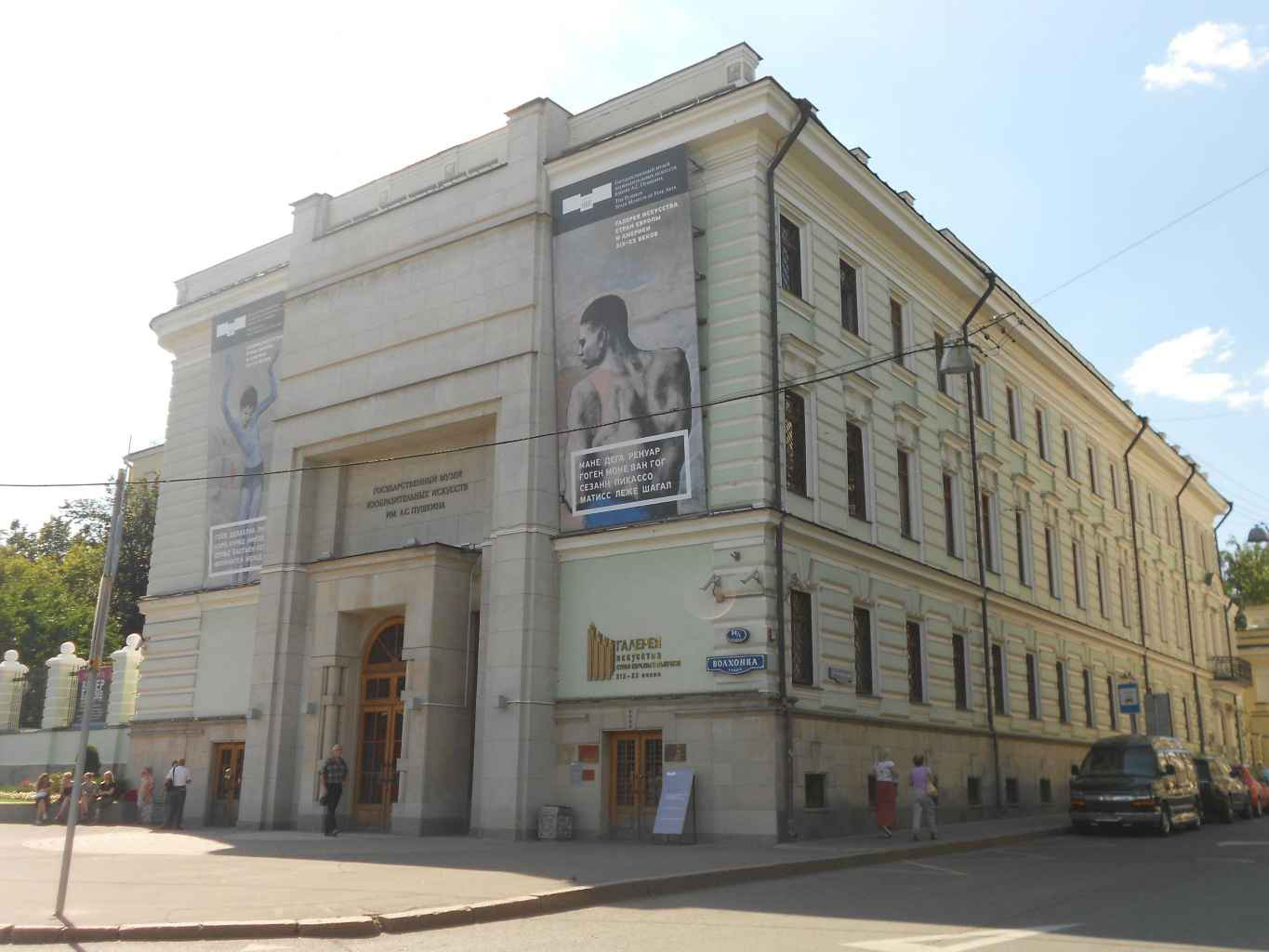
The gallery is located next to the main building of the Pushkin Museum and presents masterpieces of painting and sculpture of XIX-XX centuries: Friedrich, Delacroix, Goya, the Barbizon school, Courbet, rich collection of Impressionists, post-Impressionists and masters of the XX century (Monet, Renoir, Sisley, Pissarro, Degas, Cezanne, Gauguin, van Gogh, Toulouse-Lautrec, Matisse, Picasso including his famous Acrobat on a Ball, Derain, Henri Rousseau, Rodin).
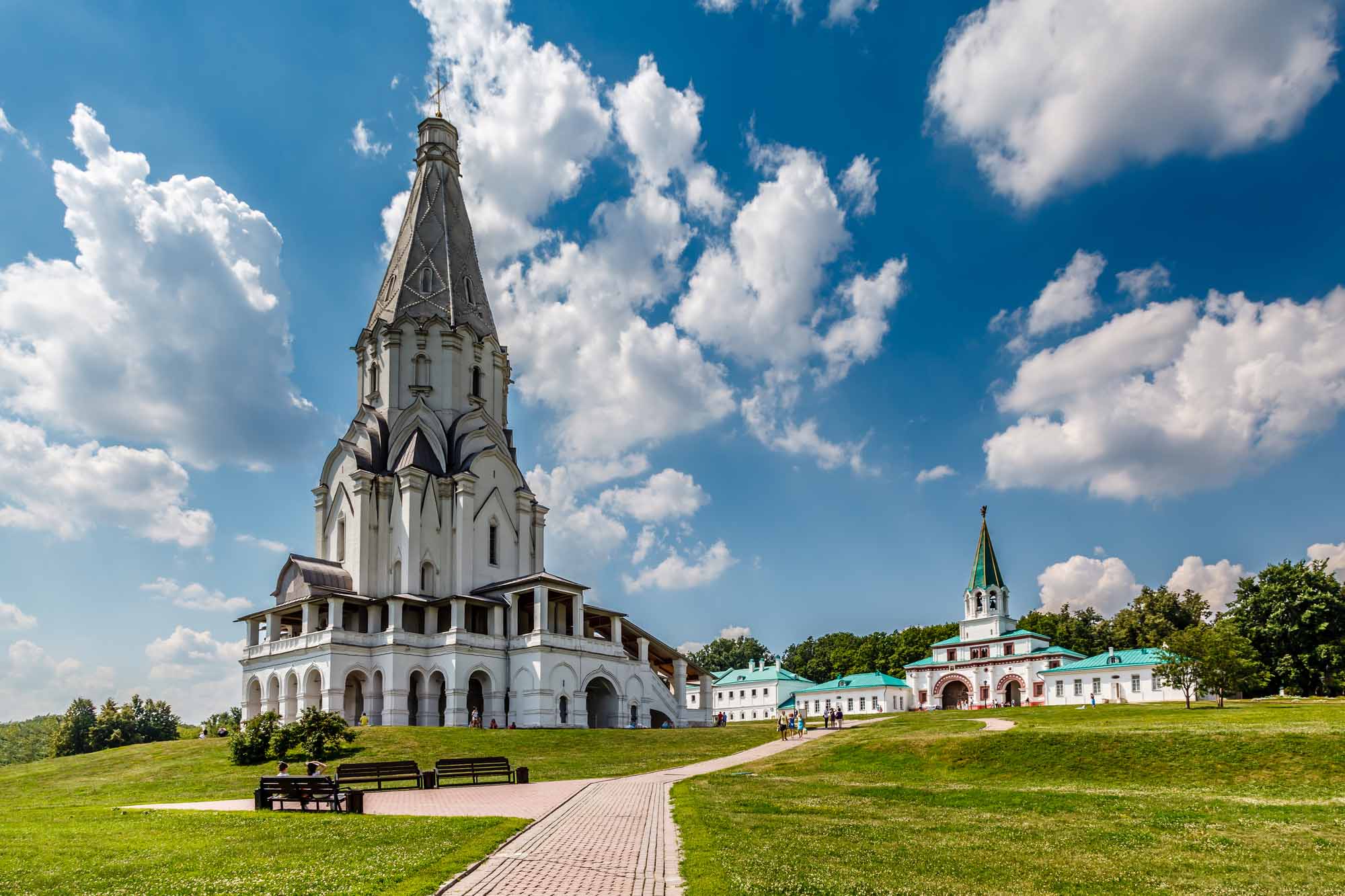
Kolomenskoye is the oldest summer residence of Moscow Grand Princes and Russian Tsars (XVI-XVII cc.). Here you can see the Ascension Church (1532) – a pearl of Russian tent-shaped architecture, wooden Church of St. George (XVI c.), Church of Our Lady of Kazan (XVII c.), Watertower (XVII c.), the Front Gates (XVII c.) and the Great wooden palace of Tsar Alexis I (XVII c.) demolished on the order of Empress Catherine II (1768) and completely full-scale reconstructed in 2010 accordingly to detailed plans of the palace survived. Also Kolomenskoye is the open air museum of wooden architecture. Unique constructions and artifacts brought from elsewhere are exhibited on the Kolomenskoye grounds. Among them are Barbican church of the Nikolo-Korelsky Monastery, the Bratsk and the Sumy Ostrogs (Russian border wooden fortresses in the XVII c.) Towers, Cumans stone idol, memorial pole from Shaydorovo village (XIX c.), mead making facility (XVIII c.), the Dutch style house of Peter the Great from the North Dvina River and surviving fragments of the Lion’s Gates of the Amusement Palace of Moscow Kremlin (XVII c.). Kolomenskoye is the oldest summer residence of Moscow Grand Princes and Russian Tsars (XVI-XVII cc.). Here you can see the Ascension Church (1532) – a pearl of Russian tent-shaped architecture, wooden Church of St. George (XVI c.), Church of Our Lady of Kazan (XVII c.), Watertower (XVII c.), the Front Gates (XVII c.) and the Great wooden palace of Tsar Alexis I (XVII c.) demolished on the order of Empress Catherine II (1768) and completely full-scale reconstructed in 2010 accordingly to detailed plans of the palace survived. Also Kolomenskoye is the open air museum of wooden architecture. Unique constructions and artifacts brought from elsewhere are exhibited on the Kolomenskoye grounds. Among them are Barbican church of the Nikolo-Korelsky Monastery, the Bratsk and the Sumy Ostrogs (Russian border wooden fortresses in the XVII c.) Towers, Cumans stone idol, memorial pole from Shaydorovo village (XIX c.), mead making facility (XVIII c.), the Dutch style house of Peter the Great from the North Dvina River and surviving fragments of the Lion’s Gates of the Amusement Palace of Moscow Kremlin (XVII c.).
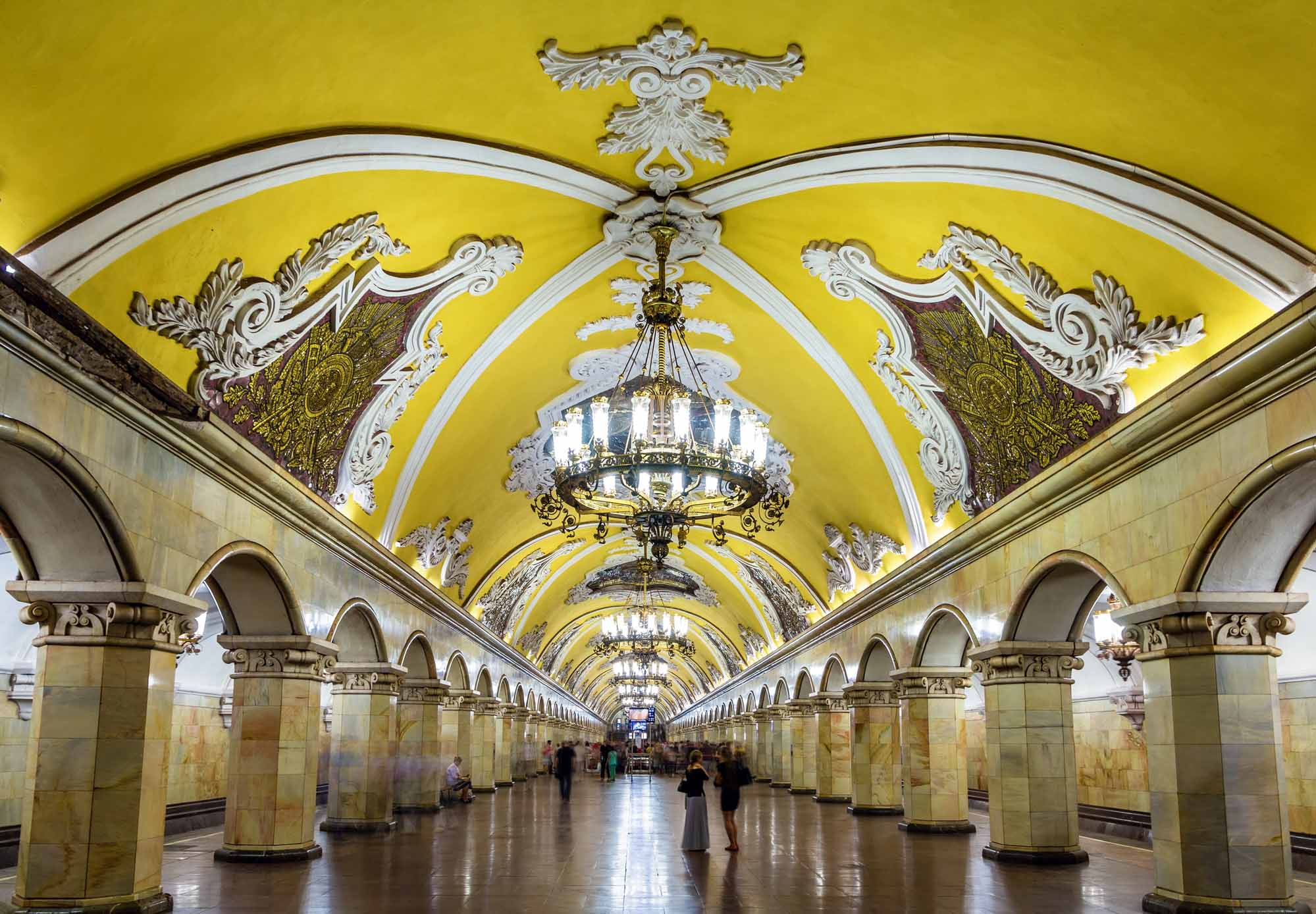
Well-known Moscow metro is spectacular system of underground public transport with fantastic mosaics, statues, stained glass panels and chandeliers. The most interesting Moscow metro stations were built in Stalin’s epoch. Among them are the Ploshchad Revolyutsii with numerous bronze figures designed by sculptor Matvei Manizer glorifying the heroic labor of the Soviet people (sculptures are placed in special niches which were not initially adapted for the massive sculptures so bent poses of the characters of Soviet propaganda looks quite amusing), the Novoslobodskaya with stained-glasses designed by great Russian painter Pavel Korin and made by Riga artists, the Mayakovskaya with stunning ceiling mosaics by Alexander Deineka (the Mayakovskaya is also famous for the solemn meeting of the Moscow Soviet (the Moscow City Council) on 06/11/1941 dedicated to the anniversary of the October revolution visited by Stalin and held in the metro because of the threat of German bombing) and many others.
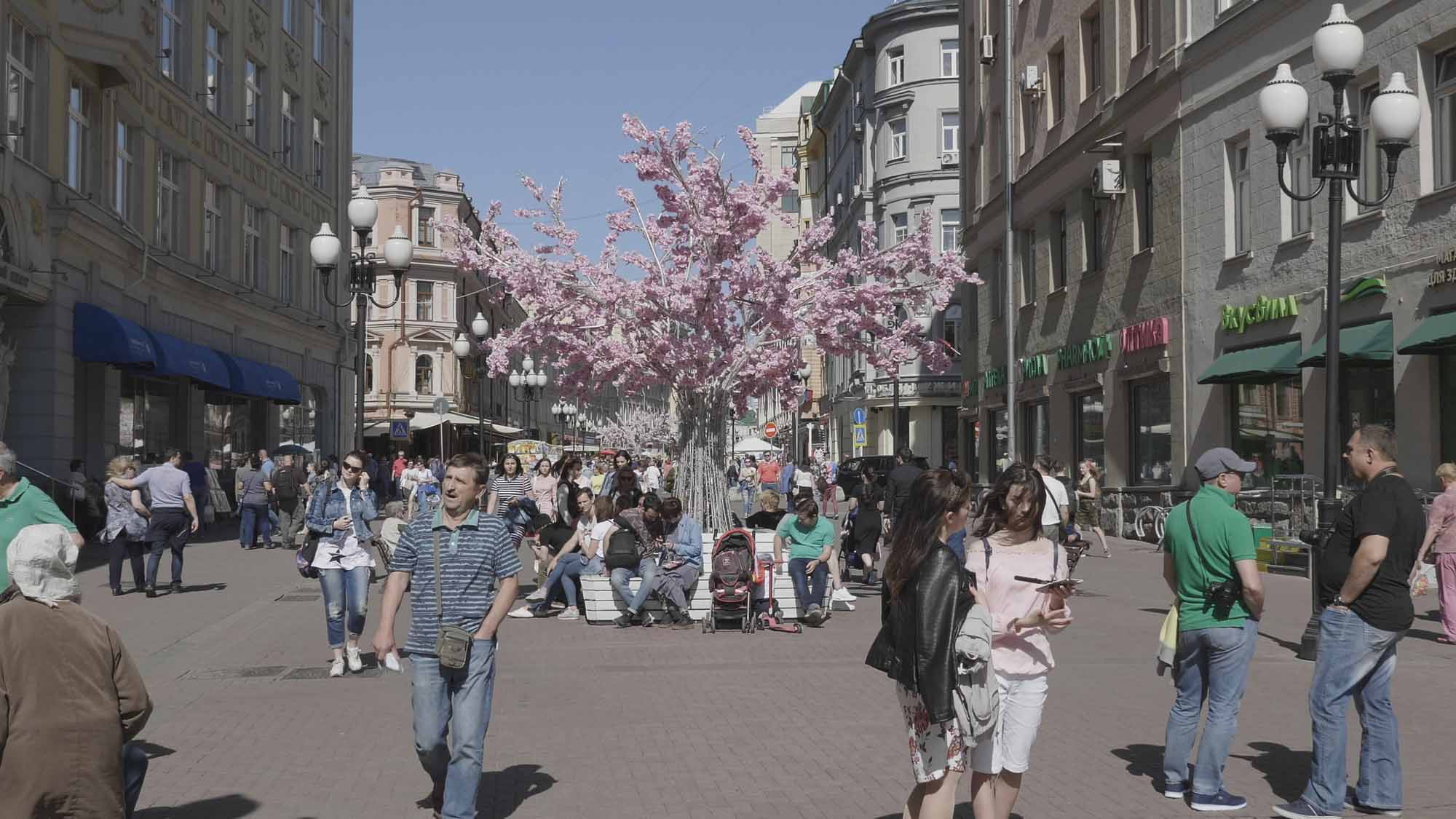
The Arbat Street is one of the first pedestrian zones of Moscow. Here you will see aristocratic houses of the early XIX century (among them is the house of General Khitrovo where great Russian poet Alexander Pushkin spent some of the happiest months of his life after the wedding to Natalia Goncharova), the Rakhmanov’s House where brilliant poet of the Russian Silver Age Andrei Bely was born and where he spent his childhood and youth, the Modern style revenue houses of XIX-XX centuries, for example, the Filatov’s House (the House with Knights), the Vakhtangov Theater and standing next to the theater building the Princess Turandot sculptural fountain designed by sculptor Alexander Burganov. Nearby at the Bolshoy Nicolopeskovsky Lane you can visit a museum arranged at the house where wonderful figure of the Russian Silver Age composer, pianist poet and philosopher Alexander Skryabin lived. He was the first who used light for music performance. One of the last his projects was the not realized Mystery which was planed as a grand event symbolizing union of the World Soul with the inert Matter in a cosmic erotic act, a symphony not only of sounds but also colors, smells, movements and even sounds of the architecture. The Arbat pedestrian street walking tour is usually combined with the Moscow Metro tour.
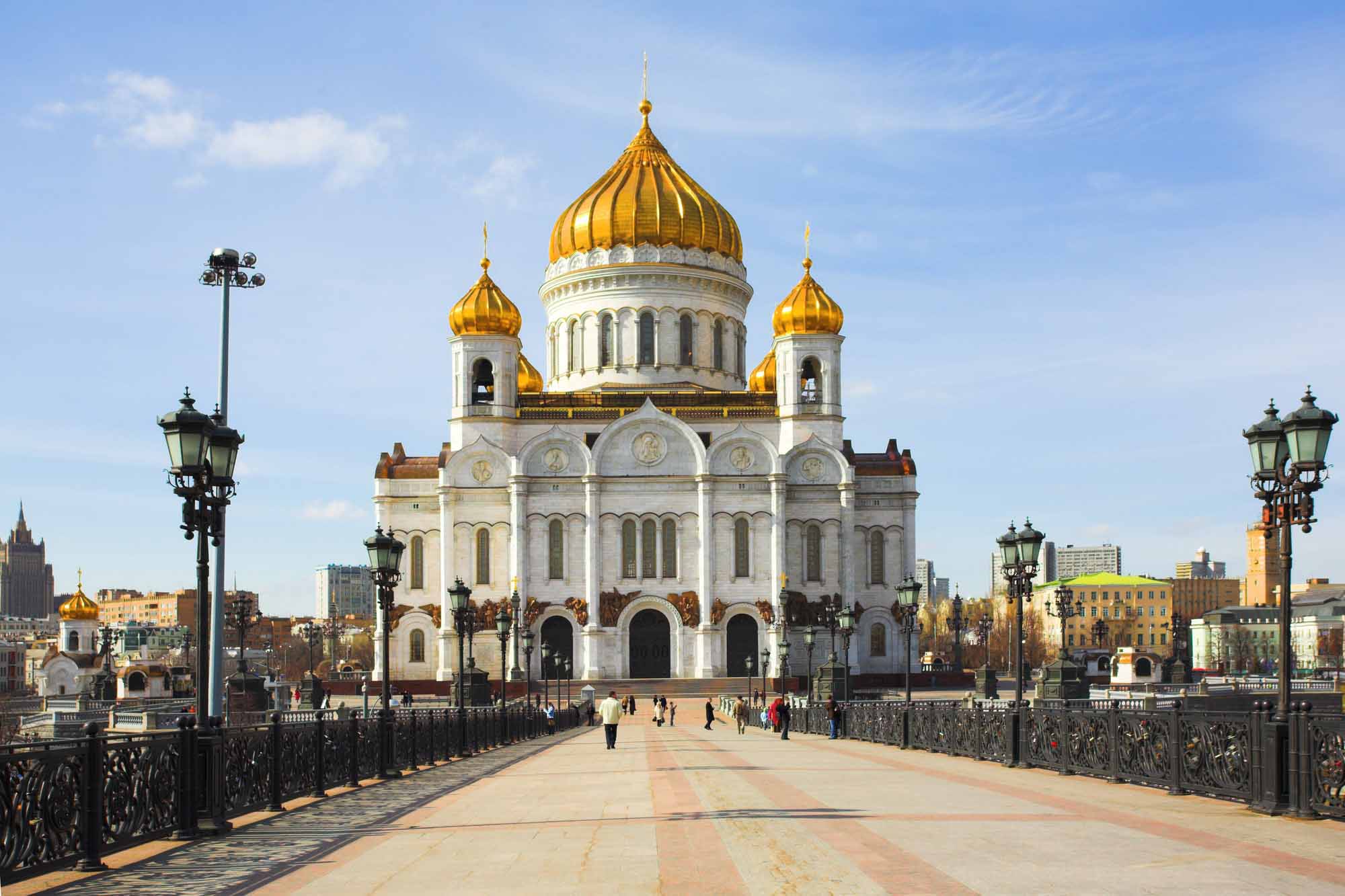
Located on the left bank of the Moskva River not far from Moscow Kremlin the Cathedral of Christ the Saviour is the tallest Orthodox Christian church in the world. The Cathedral was built in the Russian-Byzantine style in 1837-1883 on place of previously located here the Alexius Convent with was moved to the north-east outskirts of Moscow. This cathedral was erected accordingly to project of Emperor Nicholas I favorite architect Konstantin Ton (he also designed such most important buildings as the Grand Palace of Moscow Kremlin and the first in Russia railway station in St. Petersburg and Moscow) as grandiose collective tomb of all Russian soldiers and officers lost during all anti-French campaigns in the late XVIII – early XIX cc. Great Russian painters and sculptors (Vasily Vereshchagin, Konstantin Makovsky, Vasily Surikov, Peter Clodt) take part in decoration and design of the cathedral. In early 1930s Bolsheviks who were sincerely sure that history of Russia started since their October Revolution of 1917 blew the cathedral up. They planed to erect grandiose Palace of the Soviets crowned with gigantic Lenin statue on this place. Original name of the nearest Moscow Metro station built in 1935 (the Kropotkinskaya now) was the Palace of the Soviets). This project was not realized because of German aggression and in late 1950s the Moskva Pool was built here. Restored after crash of Communist regime (1991) practically at the same place where original construction was built, the Cathedral of Christ the Saviour became a symbol of new Russia and hope of its spiritual revival. The Patriarch’s Bridge built in 2004 spans both the Moskva River and the Water Bypass Canal connecting the Cathedral with historical Zamoskvorechye District.
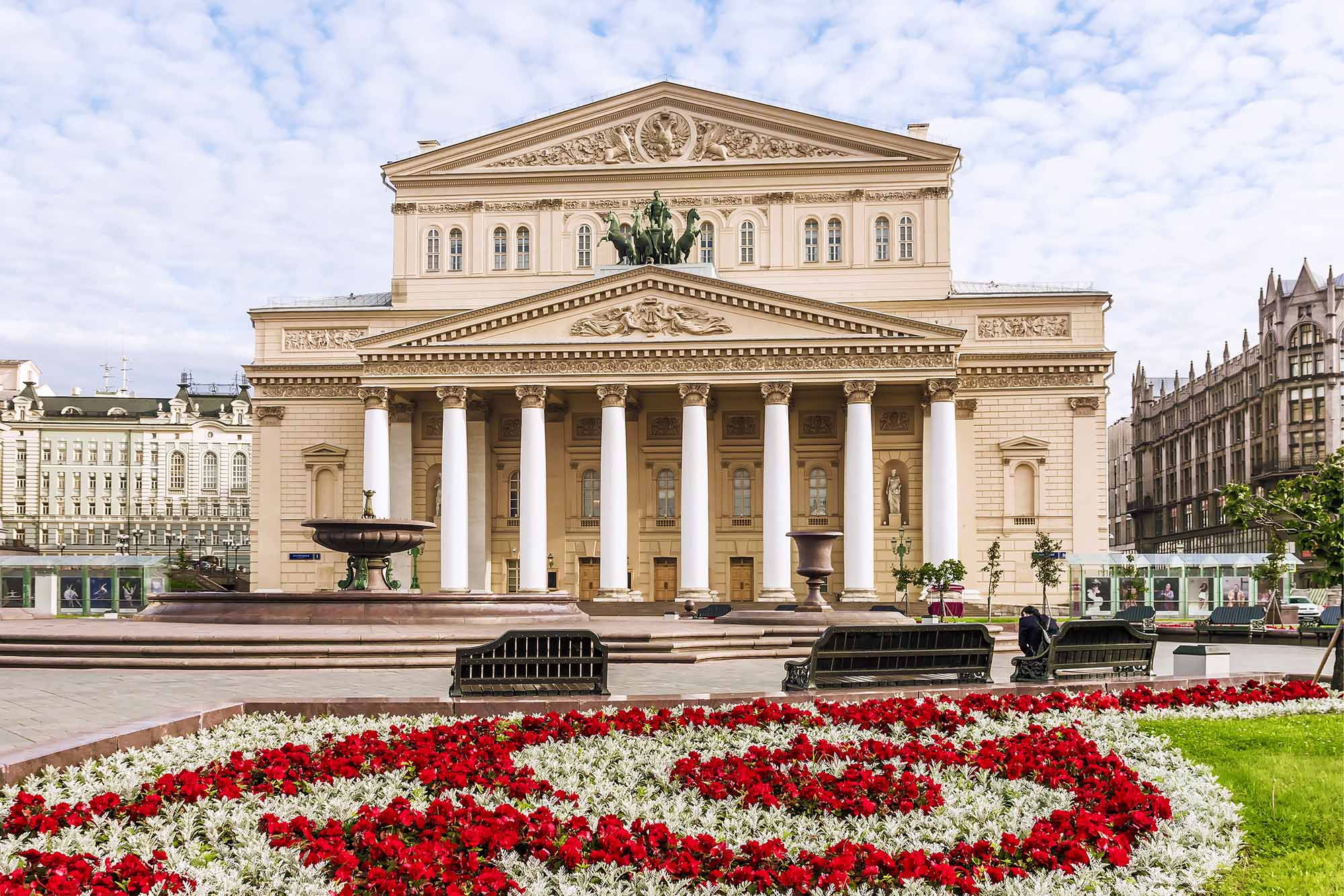
The Bolshoi Theater is the legendary ballet and opera theater of Russia and one of well-known theaters in the world. The theater was founded in 1776 when English entrepreneur and theater manager Michael Maddox formed company consisting of actors of different combination companies and serf actors. In 1780 the company moved into a new building specially built in the Petrovka Street. After two fires the contemporary building with famous quadriga by sculptor Peter Clodt was constructed in 1853. Brilliant singers, dancers, conductors, artists of the Bolshoi Theater became a glory of the world art (Feodor Chaliapin, Leonid Sobinov, Antonina Nezhdanova, Alexander Gorsky, Yekaterina Geltzer, Vasily Tikhomirov, Sergei Rachmaninoff, Konstantin Korovin, Marina Semyonova, Galina Ulanova, Asaf Messerer, Olga Lepeshinskaya, Maya Plisetskaya, Yury Grigorovich and many others). In Soviet period the Bolshoi Theater was place where many congresses of Communist party and Soviet trade unions were held. Founding of the USSR was proclaimed here on 30.12.1922.

The Novodevichy (New Maiden) Convent is a fortress and monastic ensemble of the XVI c. with its world famous cemetery located at the picturesque Moskva River bend. The Novodevichy Convent was founded in 1524 by Grand Prince of Moscow Vasily III (father of Ivan the Terrible) on honor of capturing of very important city of Smolensk as the result of war against the Grand Duchy of Lithuania (1505) and was included to the South Defense Belt formed with monasteries and convents. In XVI c. the Convent was a place of tonsure for representatives of the tsar’s family and the highest nobility. Widow of tsar Fyodor (Theodore) I Ivanovich, sister of tsar Boris Godunov Irina and sister of Peter I (the Great) Sofia Alekseyevna were tonsured here. At this convent Boris Godunov was blessed for reign after death of tsar Fyodor (Theodore) I Ivanovich (1598). In 1812 Napoleon ordered to blow the convent up but local nuns rendered harmless the fuses. The Cemetery founded in 1898 near the southern wall of the Convent was considerably extended in Soviet period and became the second after necropolis at the Kremlin wall national pantheon. Many representatives of Communist party and Soviet government (Chicherin, Semashko, Litvinov, Kollontai, Khrushchev), figures of Russian culture and science of the Soviet period (Bryusov, Mayakovsky, Alexei Tolstoy, Fadeyev, Tvardovsky, Marshak, Shukshin, Nikolai Rubinstein, Skryabin, Taneyev, Prokofiev, Shostakovich, Vakhtangov, Stanislavsky, Nemirovich-Danchenko, Sobinov, Nezhdanova, Sergei Vavilov, Vernadsky, Fersman, Obruchev, Tupolev) were buried here with monumental masonries designed by famous sculptors (Andreyev, Tomsky, Anikushin, Vuchetich, Kerbel, Konenkov, Merkurov, Mukhina, Shadr, Neizvestny). In 1930s remains and tombstones of other figures of Russian culture (Sergei Aksakov, Gogol, Chekhov, Valentin Serov, Levitan, Yermolova, Tretyakov) were moved here from different Moscow cemeteries. In 1984 remains of Chaliapin were moved to the Cemetery from Paris. The first president of post-Communist Russia Boris Yeltsin is also buried here.

The famous Nikulin Circus at the Tsvetnoy Boulevard was founded in 1880 by impresario, trainer and rider Albert Salamonsky. After the October Revolution the Salamonsky’s Circus was nationalized (1919) and became the State Circus. Many brilliant circus artists worked here. Among them are the first in Russia female lion tamer Irina Bugrimova considered by BBC a circus legend, illusionist Emil Kio and his sun Igor Kio known not only as great illusionist but also as a husband of Brezhnev’s daughter Galina during 9 days… However clowns always were most popular. Karandash (Pencil), Leonid Yengibarov, Oleg Popov, Yury Nikulin became a glory of the State Circus. In 1997 the Curcus was named after Yury Nikulin who works here during 50 years as artist and then as chief director and the director of the circus.
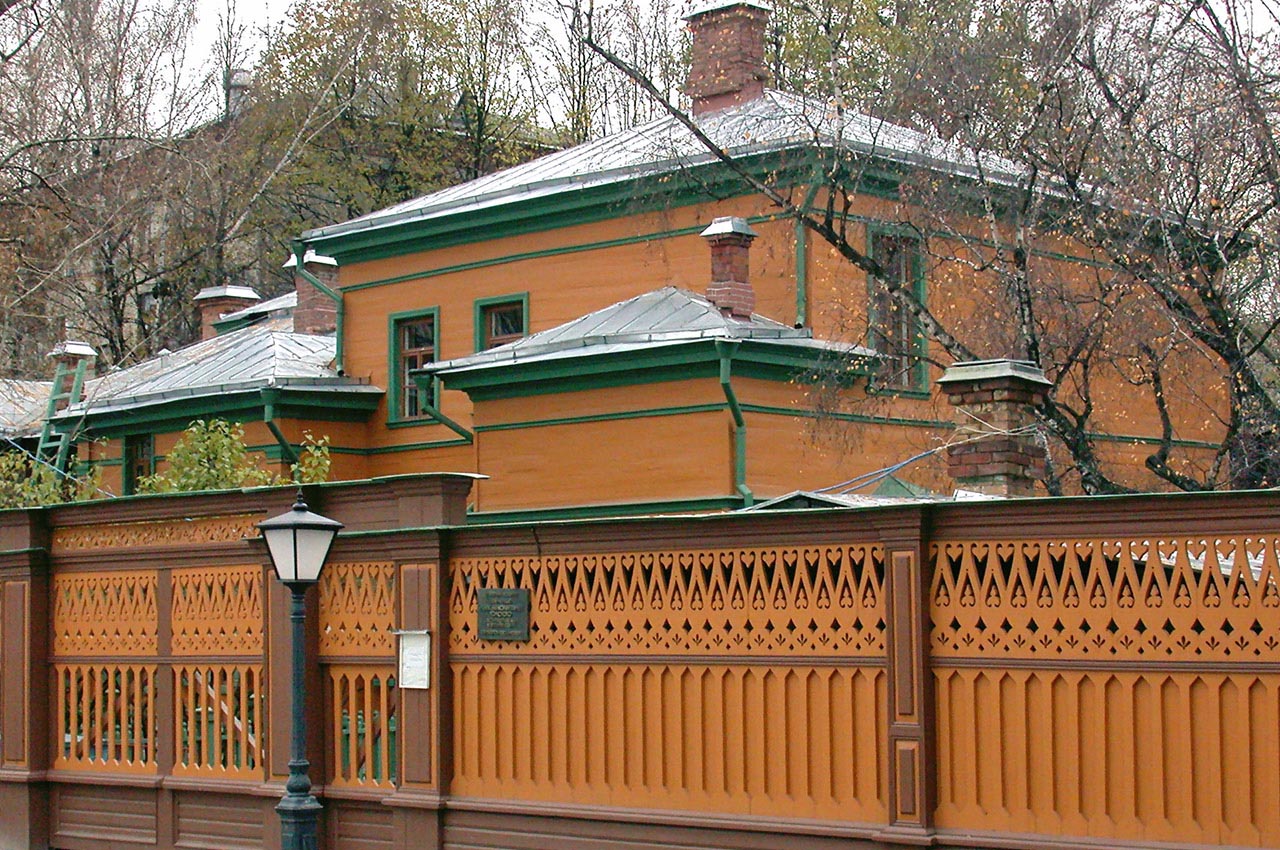
This not necessary to go to Yasnaya Polyana to visit rooms where the great writer Leo Tolstoy lived and worked. You can enjoy atmosphere of Tolstoy’s dwelling in the center of Moscow at house where original furniture of the mid-1890s is survived. This house was bought by writer in 1882. Here he spent almost all winter season till 1901. You will see studio of the great writer where he created about 60 his works. Among them are story The Death of Ivan Ilyich (1882-1886) written by him soon after his religious conversion and famous novel Resurrection (1889-1899). Here Leo Tolstoy who was considered actual spiritual guru by his contemporaries was visited by Andrei Bely, Ivan Bunin, Vsevolod Garshin, Maxim Gorky, Dimitry Grigorovich, Vladimir Korolenko, Nikolai Leskov, Alexander Ostrovsky, Vladimir Soloviev, Anton Chekhov, Fyodor Chaliapin, Marc Antokolsky, Ivan Kramskoy, Vasily Klyuchevsky, Alexander Skryabin, Nikolai and Anton Rubinstein, Konstantin Stanislavsky and Vladimir Nemirovich-Danvenko. Here Nikolai Ge (1884) and Ilya Repin (1893) painted his portraits. In 1920 Lenin who was a great admirer of Tolstoy’s works (this is a fact that he wrote a novel Anna Karenina again several times) visited the Tolstoy’s estate and personally signed here a decree to arrange museum at Leo Tolstoy at the estate in Khamovniki.
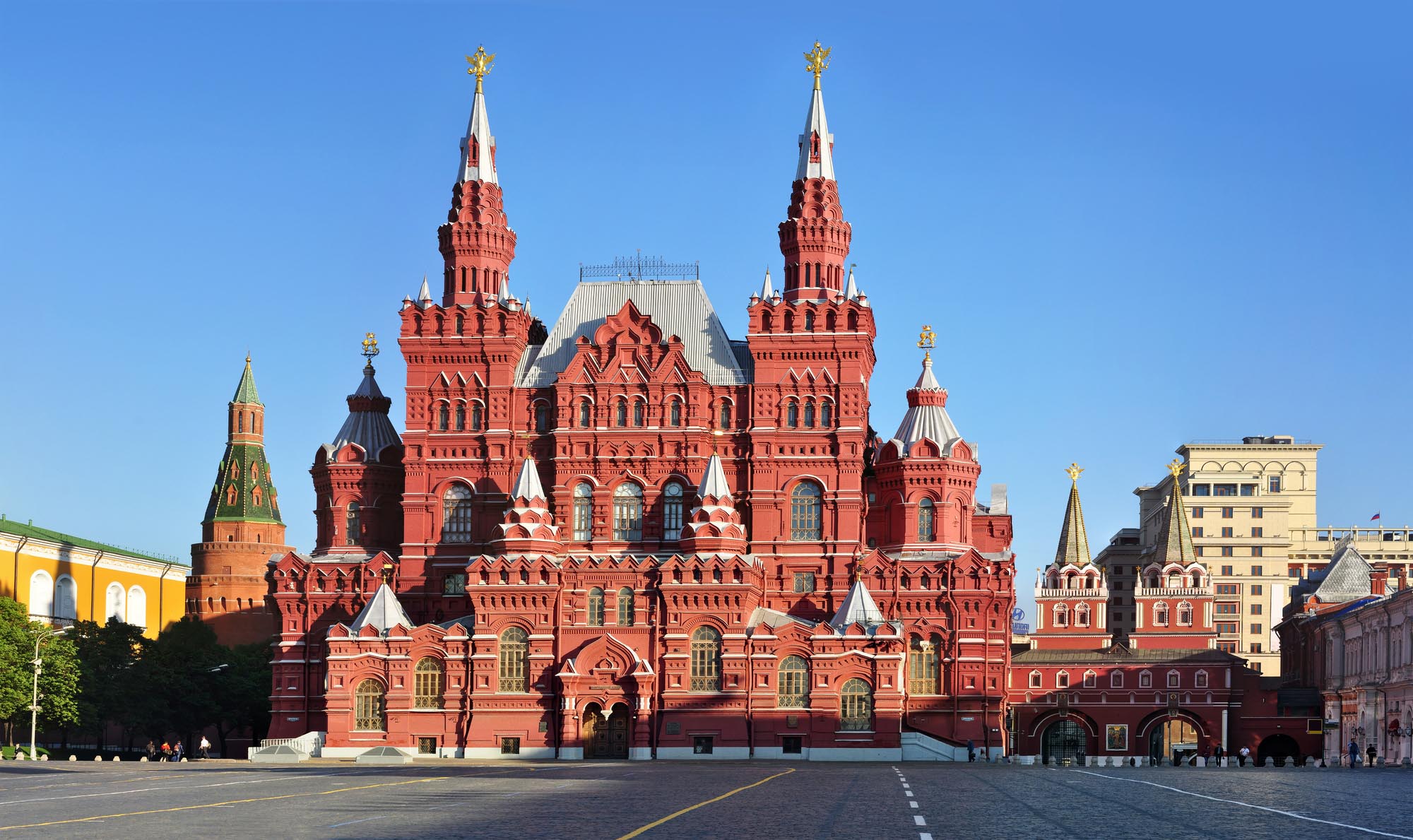
The State Historical Museum is the largest in Russia museum presenting national history since the ancient times till early XX c.. The Museum was founded in 1872 on base of the Sevastopol (devoted to the Crimean War) Department of the Polytechnic Exhibition, antiquities from personal collection of famous Russian historian, the great expert in Moscow olden times Ivan Zabelin and unique collection of documents presented to the Museum in the early XX c. by outstanding collector Pyotr Shchukin. In 1883 new building specially constructed at the Red Square was opened for visitors. Among numerous unique items of the Historical Museum you can see, for example, Byzantine manuscripts of the IX c. (Codex Mosquensis II – Greek uncial manuscript of the Gospels and illuminated Psalter) and splendid sabre delivered to Napoleon after campaign in Egypt and Syria and then presented by him to Russian officer Pavel Shuvalov who accompanied Napoleon from Fontainebleau to port of Saint-Raphaël from where former Emperor left to the Elba Island. In 1918 the sabre was confiscated by the Red Army men and was used as fighting arms during the Civil War in Russia. Another interesting item is the 2-m copper globe made in 1690s by heirs of famous Dutch cartographer Willem Blaeu for Swedish king Karl XI. The next king of Sweden Karl XII couldn’t pay for this globe because of financial troubles associated with the Great North War and globe was purchased by opponent of Karl XII Russian tsar Peter I who considered tenfold reduction of previous quotation as the result of very long personal correspondence with Willem Blaeu company (Russian tsar actually was “the Great”).
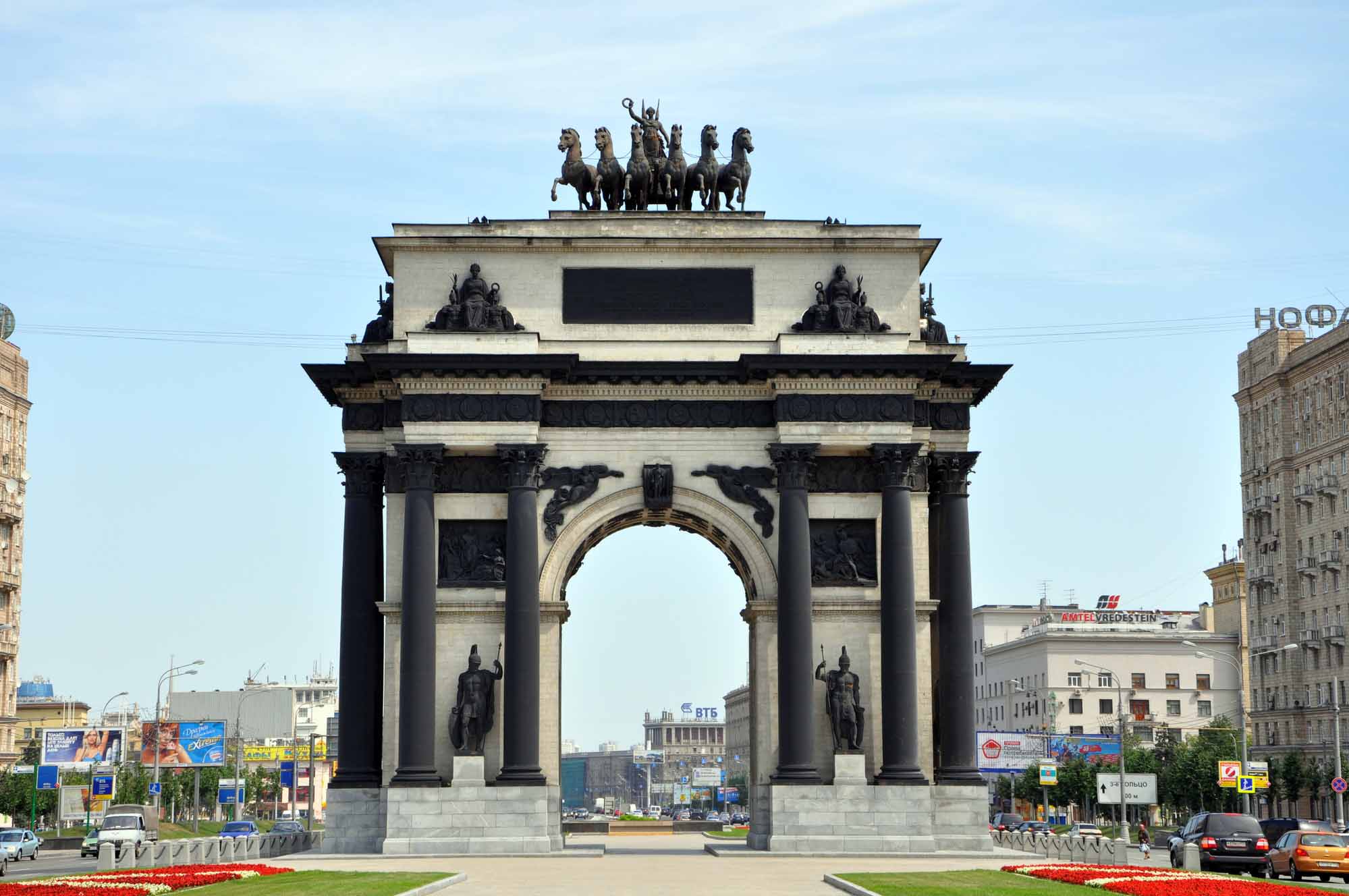
For those who are interesting in history visiting of the Battle of Borodino Panorama is recommended. This grandiose circular picture was created by great Russian war artist Franz Roubaud in 1910-1912 for the 100th anniversary of the French invasion of Russia. It shows the most tense moment of the battle – French atack on the village of Semyonovskoye in the afternoon on 26/08/1812. The painting was survived very good because of restoration made in late 1940s by team led by great Russian artist Pavel Korin. Since 1962 the panorama is exhibited at special building constructed at the Kutuzov Avenue in the west part of Moscow on place of former village of Fili. Just near the building of the Panorama you can see historical hut where the meeting of Russian commanders was held after the Battle of Borodino and Russian Commander-in-Chief field marshal Mikhail Kutuzov decided to yield Moscow and also monument to Kutuzov (original hut was burnt down in 1868 but was restored soon on base of detailed descriptions of contemporaries). In 1968 the 28-m Triumphal Arch erected in the Empire style at the Tverskaya Zastava Square in 1827-1834 in honor of victorious anti-Napoleon campaigns of 1812-1814 but dismantled in 1930s during Stalin’s reconstruction on Moscow was restored at the Kutuzov Avenue not far from the Battle of Borodino Panorama. For those who are interesting in history visiting of the Battle of Borodino Panorama is recommended. This grandiose circular picture was created by great Russian war artist Franz Roubaud in 1910-1912 for the 100th anniversary of the French invasion of Russia. It shows the most tense moment of the battle – French atack on the village of Semyonovskoye in the afternoon on 26/08/1812. The painting was survived very good because of restoration made in late 1940s by team led by great Russian artist Pavel Korin. Since 1962 the panorama is exhibited at special building constructed at the Kutuzov Avenue in the west part of Moscow on place of former village of Fili. Just near the building of the Panorama you can see historical hut where the meeting of Russian commanders was held after the Battle of Borodino and Russian Commander-in-Chief field marshal Mikhail Kutuzov decided to yield Moscow and also monument to Kutuzov (original hut was burnt down in 1868 but was restored soon on base of detailed descriptions of contemporaries). In 1968 the 28-m Triumphal Arch erected in the Empire style at the Tverskaya Zastava Square in 1827-1834 in honor of victorious anti-Napoleon campaigns of 1812-1814 but dismantled in 1930s during Stalin’s reconstruction on Moscow was restored at the Kutuzov Avenue not far from the Battle of Borodino Panorama.
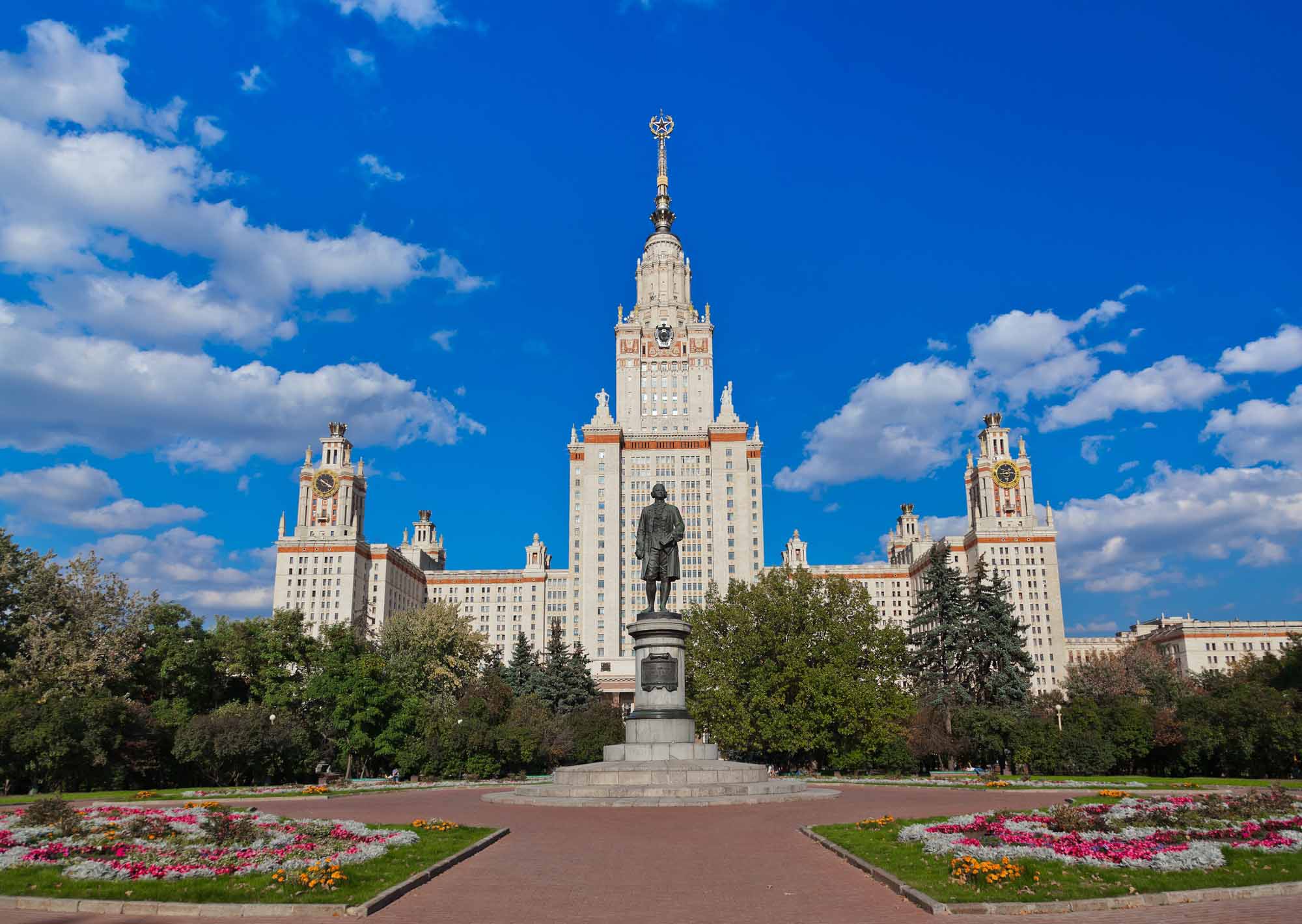
The Sparrow Hills is a hill on the right bank of the Moskva River and one of the highest points in Moscow (85 meters above the river). Between 1935 and 1999 the hill was known as Lenin Hills. On the top of the hill there is an observation platform, from which you can enjoy a splendid view of the city. You will see the Novodevichy Convent, Luzhniki Metro Bridge, the skyline of Moscow City skyscrapers, the Luzhniki Stadium (where the 1980 Summer Olympics took place). You can descent from the observation platform to the Luzhniki Stadium by the cableway. In front of the observation platform there is the campus of the Moscow State University, which is also one of the symbols of Moscow. The first Russian University was founded in Moscow in 1755 by an outstanding Russian scientist Mikhail Lomonosov. Now the university has his name. The Lomonosov university is the highest ranking Russian university for research output. Very notable is the campus of the university located on Sparrow Hills. The building was constructed in 1953 in Stalin’s Empire style. The central tower is 240 m tall and 36 stories high. The building contains a total of 33 kilometres of corridors and 5,000 rooms. The building’s facades are ornamented with giant clocks, barometers, thermometers, statues, carved wheat sheaves, and Soviet crests. The campus is surrounded by a park.
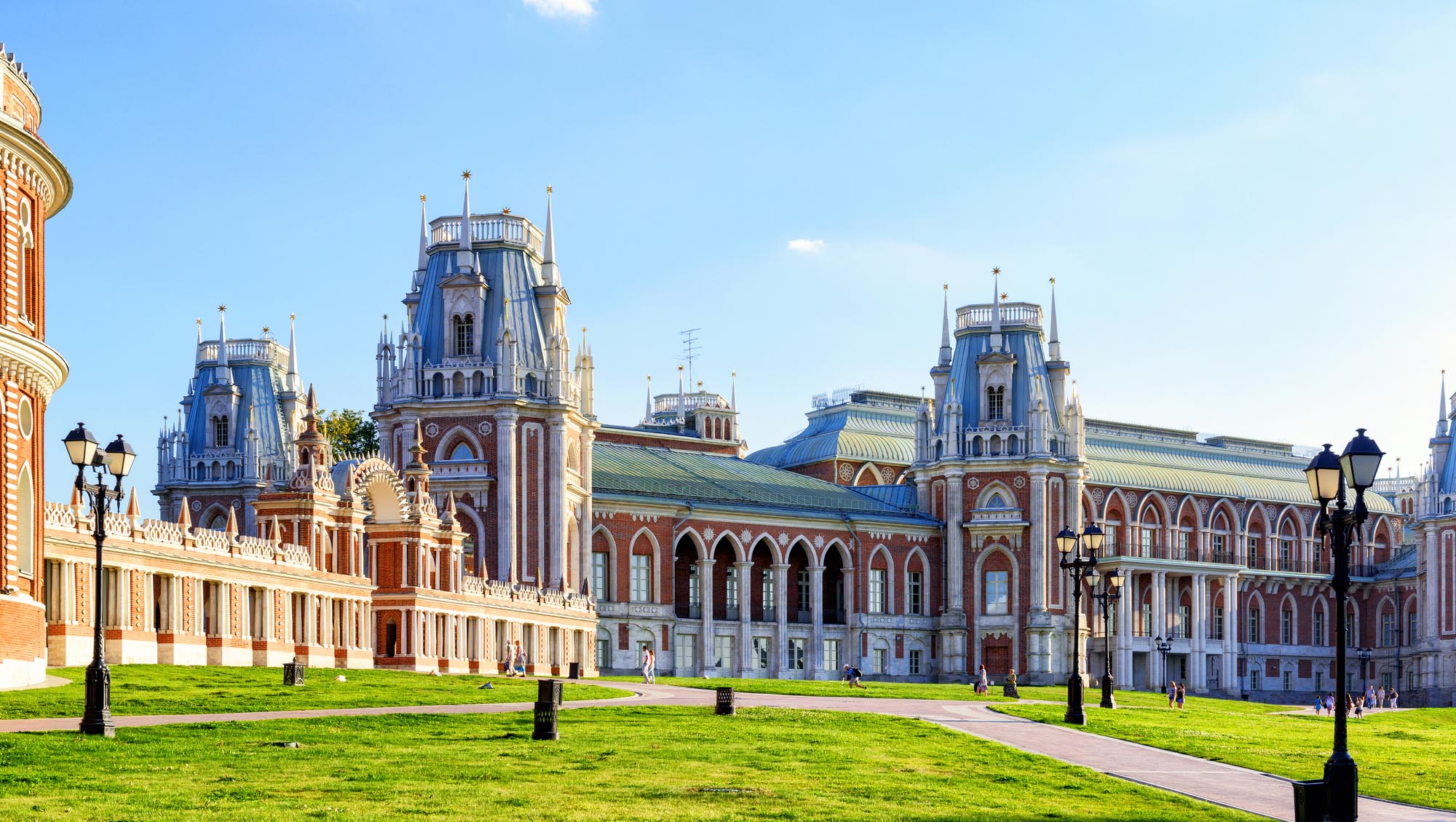
Tsaritsyno is a palace museum and park reserve in the south of Moscow. The palace complex was created as a suburb residence of Empress Catherine the Great. It was designed and built by the architect Vasily Bazhenov. After the Empress’s death work stopped and the buildings were not completed. The unfinished palace stood abandoned for more than 200 years. In 2005-2007 the complex was completed and extensively reworked . Nowadays the complex includes, Grand palace, greenhouses, historical landscaped park with ponds and new park zones with light dynamic fountain.
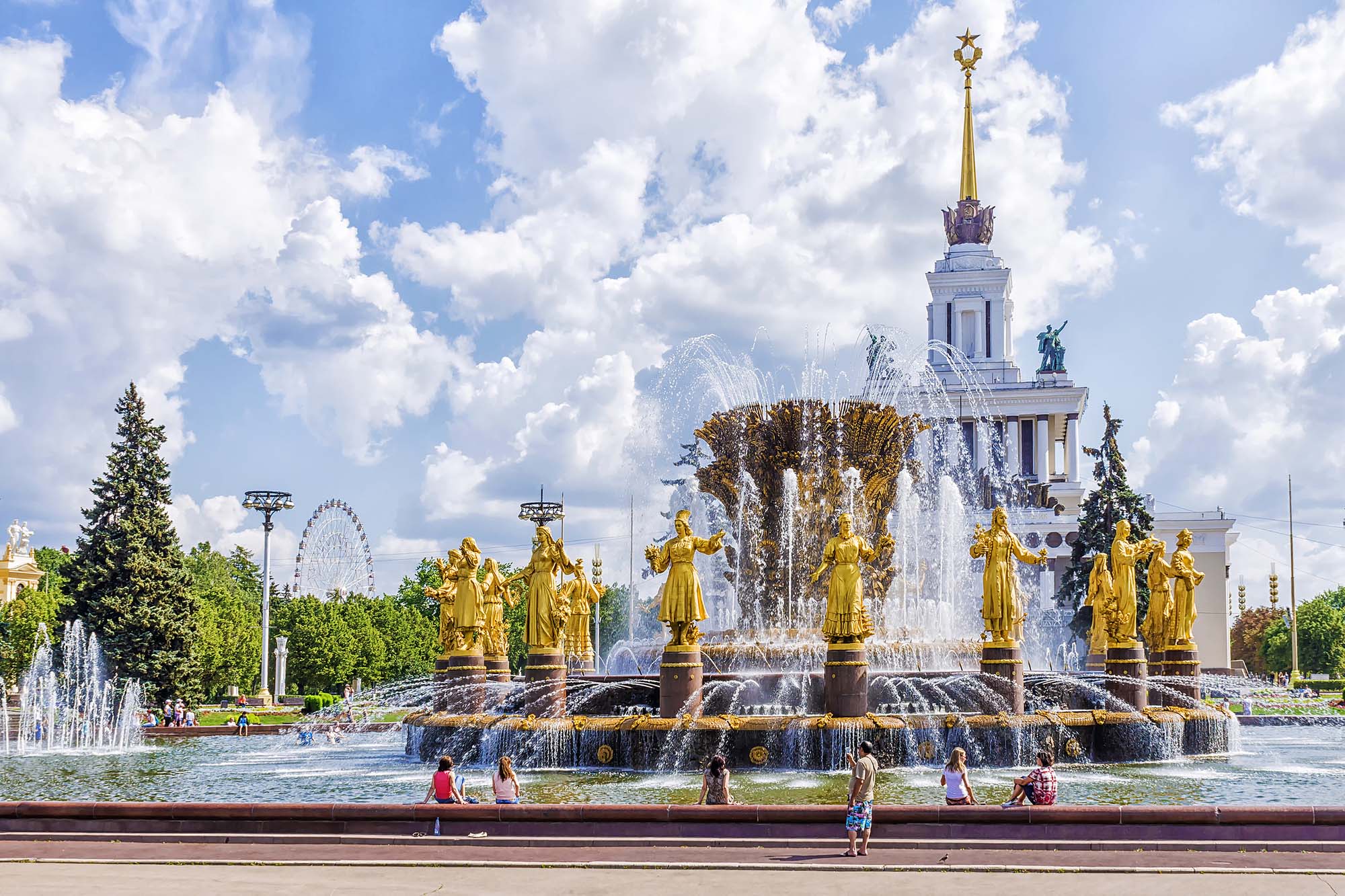
VDNKH is an abbreviation of Exhibition of Achievements of National Economy. It is a unique historical and architectural complex. The exhibition was established in 1935. The idea of the exhibition was to demonstrate the success of collective farms by collecting and showing the best results of collective farmers’ work on a specific area. From the very first year of its existence it became a laboratory where the best Soviet architects, sculptors and artists experimented with the new Soviet style. One of the most known Soviet statues, the Worker and Kolkhoz Woman, and beautiful fountain “Friendship of Folks” are also located here. In the design of the buildings artists and sculptors used a variety of natural materials. Facades of the pavilions of Soviet republics show the strategic meeting of architectural traditions with the arts and crafts of each region. Now in the pavilions different museums and exhibitions are located such as the Centre for oceanology and sea biology Moskvarium, an interactive historical museum, a cosmonaut museum, Moscow model and many others. There is also the Buran spacecraft model, the Vostok rocket, Tupolev Tu-154 plane. On the territory of the VDNKH there is a park, squares with fountains and flowerbeds, ponds, cafes and restaurants. The exhibition is a very popular place for recreation of the Muscovites and tourists.
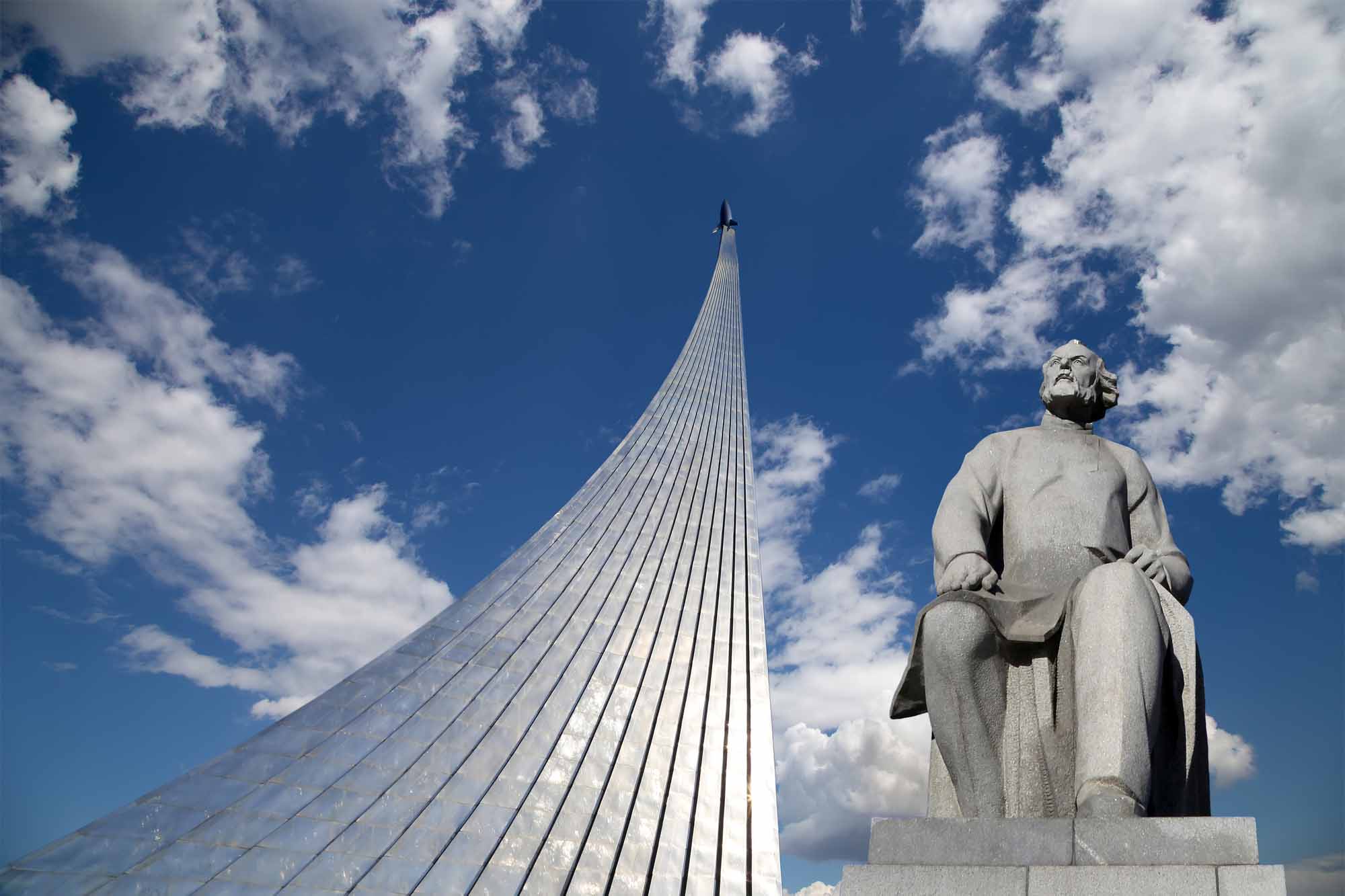
The Memorial Museum of Cosmonautics was established in 1981 to commemorate nation’s achievements in space exploration. The museum is located within the base of the Monument to the Conquerors of Space. Museum exposition gives a retrospect on how Soviet and Russian space science evolved starting from first man-made satellites subsequently followed by the first manned space flight, first space walks, Moon exploration programs, Solar system exploration programs and international space research programs.
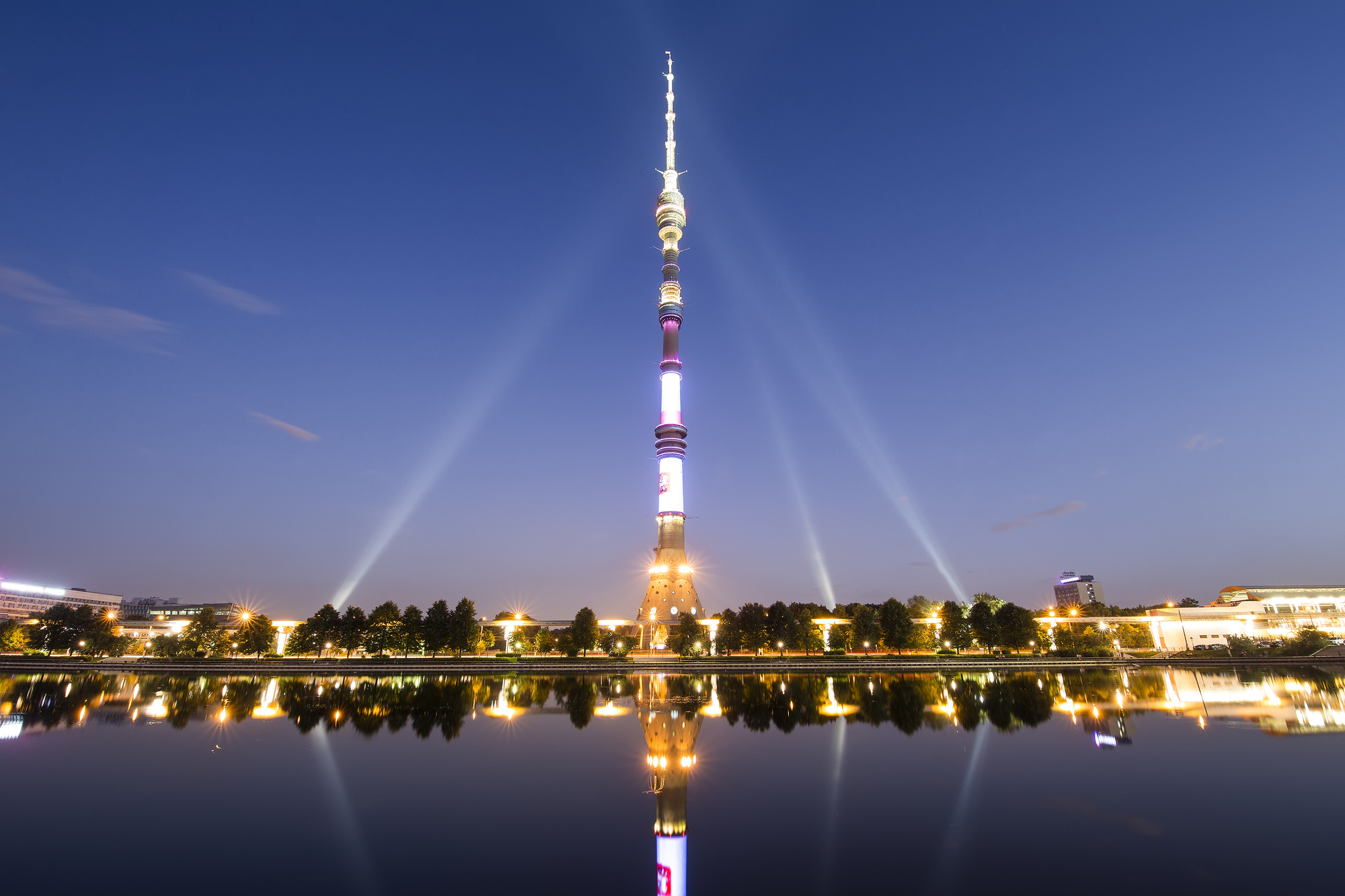
The Ostankino Tower is a television and radio tower located in the north of Moscow. The 540 meters high Ostankino tower is considered to be the tallest free-standing structure in Europe and 11th tallest in the world. The tower was built between 1963-1967 to mark the 50th anniversary of the October Revolution. Being created for transmission of television and radio signals to new distances, the tower remains of key importance up to present days. Besides its main role, the Ostankino Tower became a popular tourist attraction. Tourists can rise at observation deck located at height of 337 meters and enjoy an exciting panoramic city view. At the height of 330 meters there is a dining complex “7th Heaven”, where you may wonderfully examine the city and enjoy the European and Russian cuisine. The dining complex has rotating floors with full turnover per 40 minutes.

The Moscow International Business Center is a commercial and business district known also as Moscow City. The district is situated on the Presnenskaya Embankment of the Moskva River, approximately 4 kilometers west of Red Square. The Moscow City is a remarkable site of Moscow’s skyline thanks to its skyscrapers. The Federation Tower is considered to be Europe’s second tallest building. On the territory of the complex there are offices, residentials, hotels, retail and entertainment facilities, Expocentre.

The Izmailovo Kremlin is a center of culture and entertainment, based at the famous Izmaylovo Vernissage. The present kremlin in Izmailovo is an imitation built in Old Muscovite Russia style based on sketches from the 14th-17th centuries and is also inspired by drawings of Russian fairy tales. The kremlin has a wedding palace, a restaurant and bars, Vodka Museum. There is also a large open flea market where people sell various Russian crafts and souvenirs. Dishes from different regions of Russia are also sold here.

The Gorky park is a central park in Moscow, named after Soviet writer Maxim Gorky. It is one of the best recreational places in the city with space for rest, sport, dancing and open-air games. The park was opened to public in 1928. The Gorky Park is located at Krymsky Val, along the Moskva River on the area of 109 ha. It splits into two main parts: ground part and Neskuchny Garden. In 2011 Gorky Park became the first world quality amusement park in Russia. Many cultural and sport events take place here throughout the year. In winter a 15,000 square meter ice rink is organized in the park.
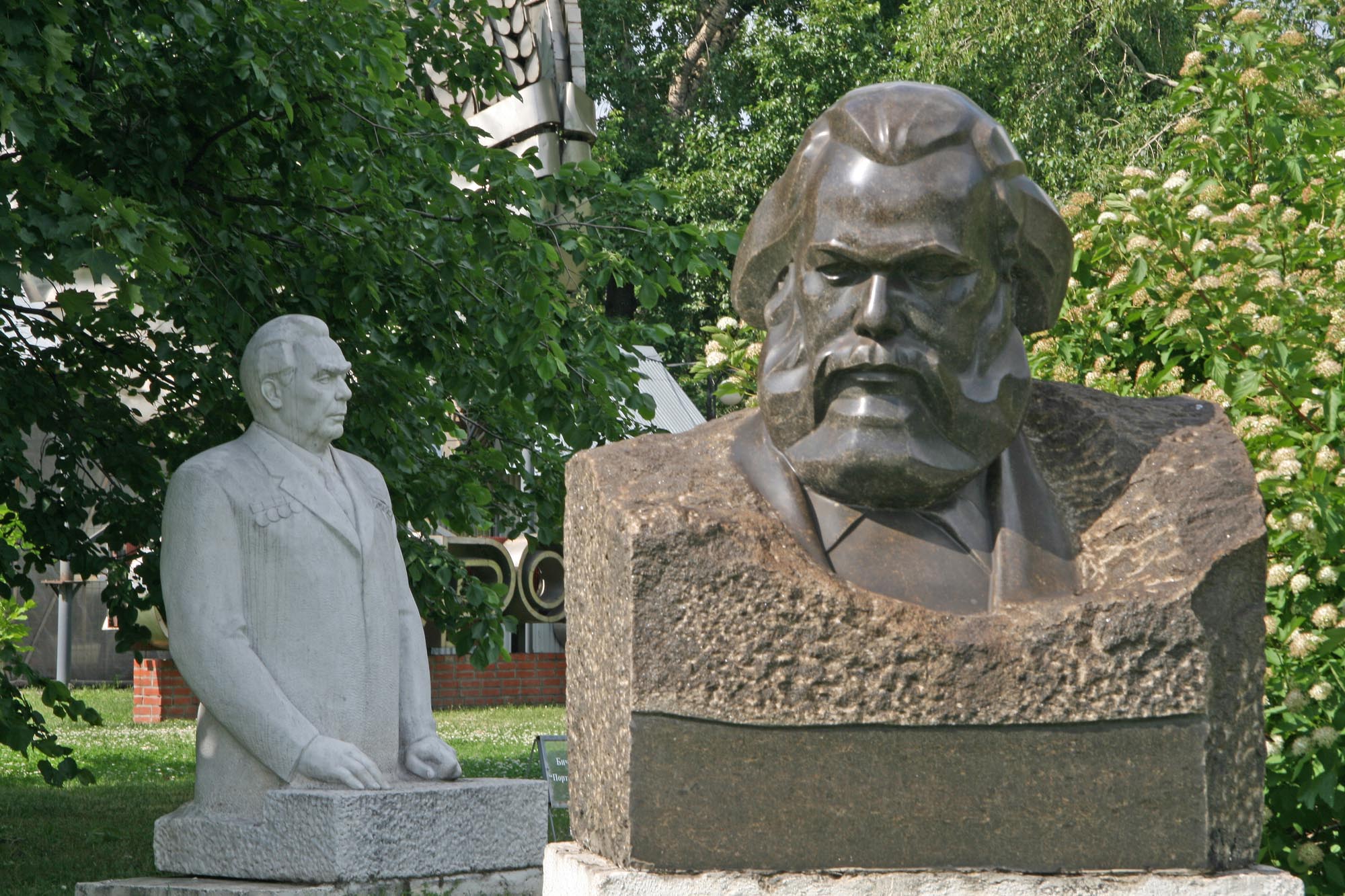
Muzeon park of arts is a unique open air museum of sculpture. More than 1000 sculptures are represented here. Most of the sculptures are the monuments of the Soviet era and socialism period, works by Russian avant-gardists and contemporary artists. In recent years Muzeon became one of the most dynamically developing cultural and educational spaces in Moscow. The park represents an unusual exhibition space, a platform for rare movies shows, theatre performances and original musical festivals. It is a centre for education and creative workshops.

Zaryadye Park is a landscape urban park located just near to Red Square and Kremlin on the site of the former Rossiya Hotel. Zaryadye Park was opened in 2017. The park occupies an area of 13 ha. It represents the nature of Russia and is divided into four climatic zones: forest, steppe, tundra, and the floodplains. On the territory of the park there is a media center, a nature center, a restaurant, a market, two amphitheaters and a philharmonic concert hall. One of the main features of the park is the floating bridge over the Moskva River. It is a 70 meter structure in the form of the letter «V» with a large outward extension above the water and without a single support. Visitors can enjoy a picturesque view of the Kremlin from the floating bridge.
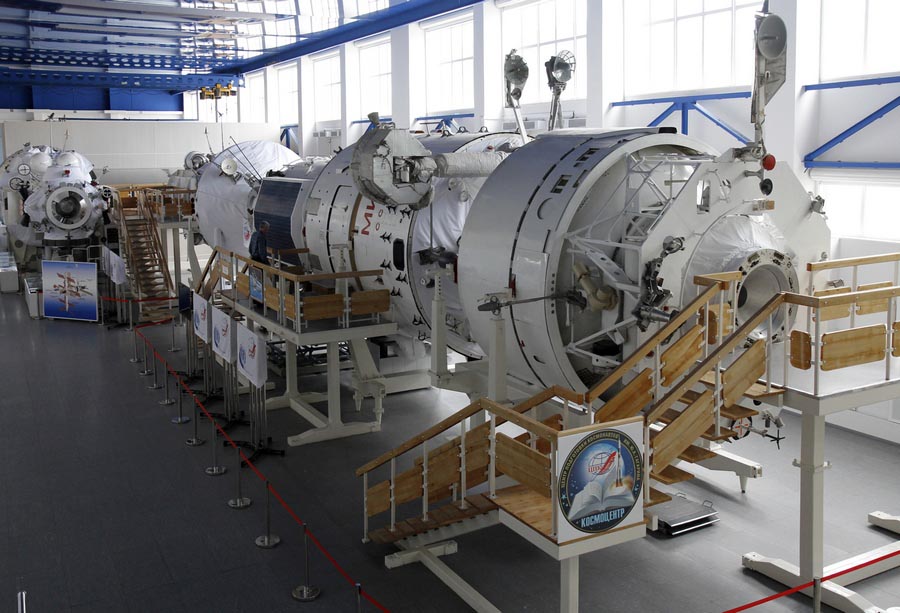
The Russian Cosmonaut Training Center (25 km to the east of Moscow) named after Yuri Gagarin who did the first manned flight to the space is famous all over the world. You will have a chance to visit a local museum and memorial office of Yuri Gagarin. During your visit to the special technical zone of the Center you will have the opportunity to see unique simulators, the centrifuge, the hydro-lab with models of space vihicles. In a huge swimming-pool there is a model of spece station. Water weightlessness enables cosmonauts to practice their skills necessary for their travelling into outer space.
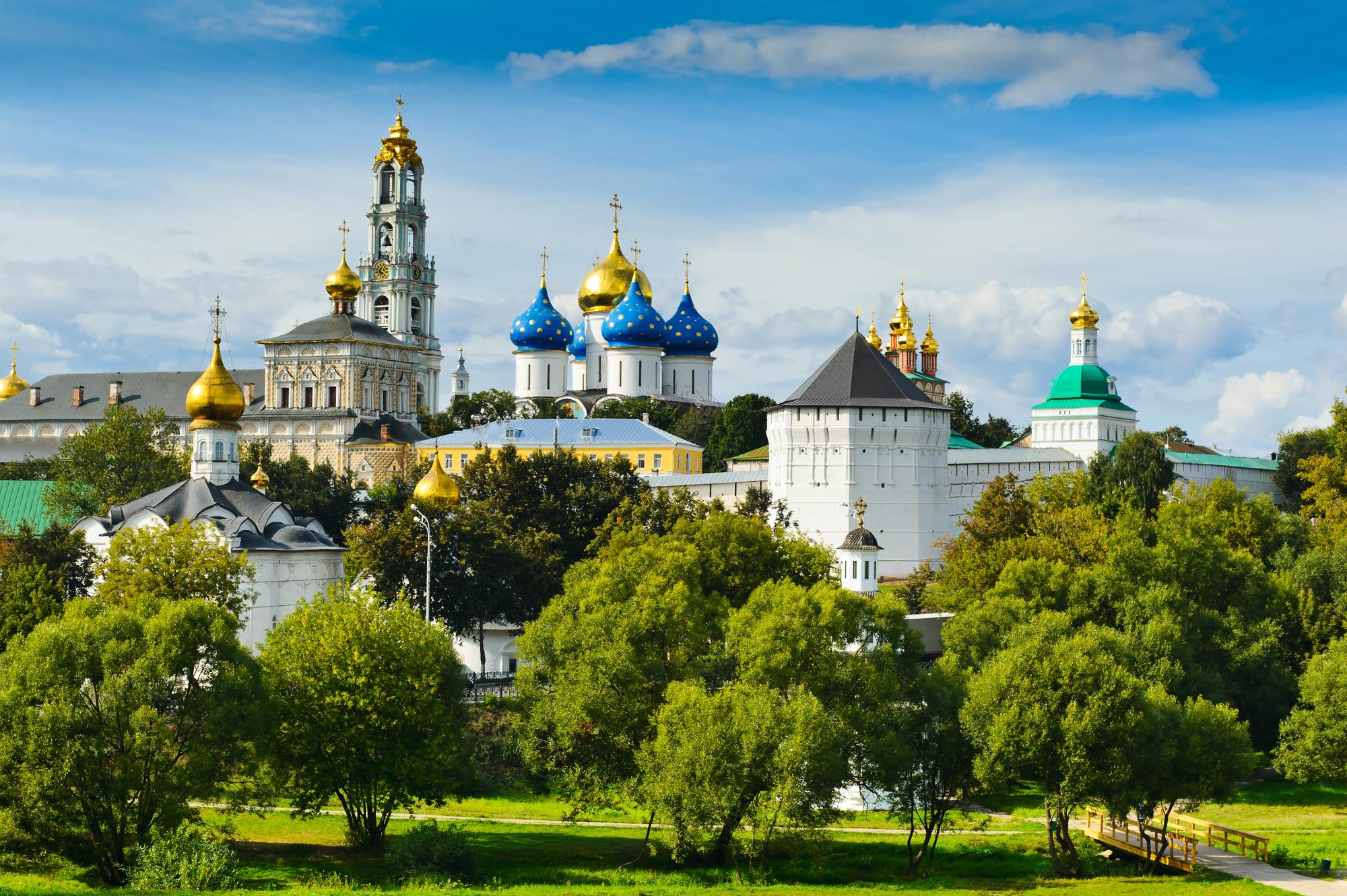
The town of Sergiev Posad (74 km to the north-east from Moscow) is a lovely provincial town which life is centered around the well-known Holy Trinity Sergius Monastery. The town was named in honour of St. Sergius who was born in the neighboring town of Radonezh and founded of the Trinity Monastery that is now known as the Holy Trinity Sergius Laura, spiritual center of the Russian Orthodox Church, one of the main destinations of Christian pilgrimage and one of the greatest attractions for tourists. Architectural ensemble of the Trinity-Sergius Laura (XV-XIX cc.) reflects all periods of Russian architecture development. The Trinity Cathedral, the major church of the monastery has unique iconostasis of Andrei Rublev. The Dormition Cathedral is a sepulcher of the Russian patriarchs. The Trinity-Sergius Laura is functioning monastery (about 200 monks). The Ecclesiastical Academy is located on its grounds. You have a chance to stand a service at one of churches open to public and to listen to one of the best choirs of Russia.
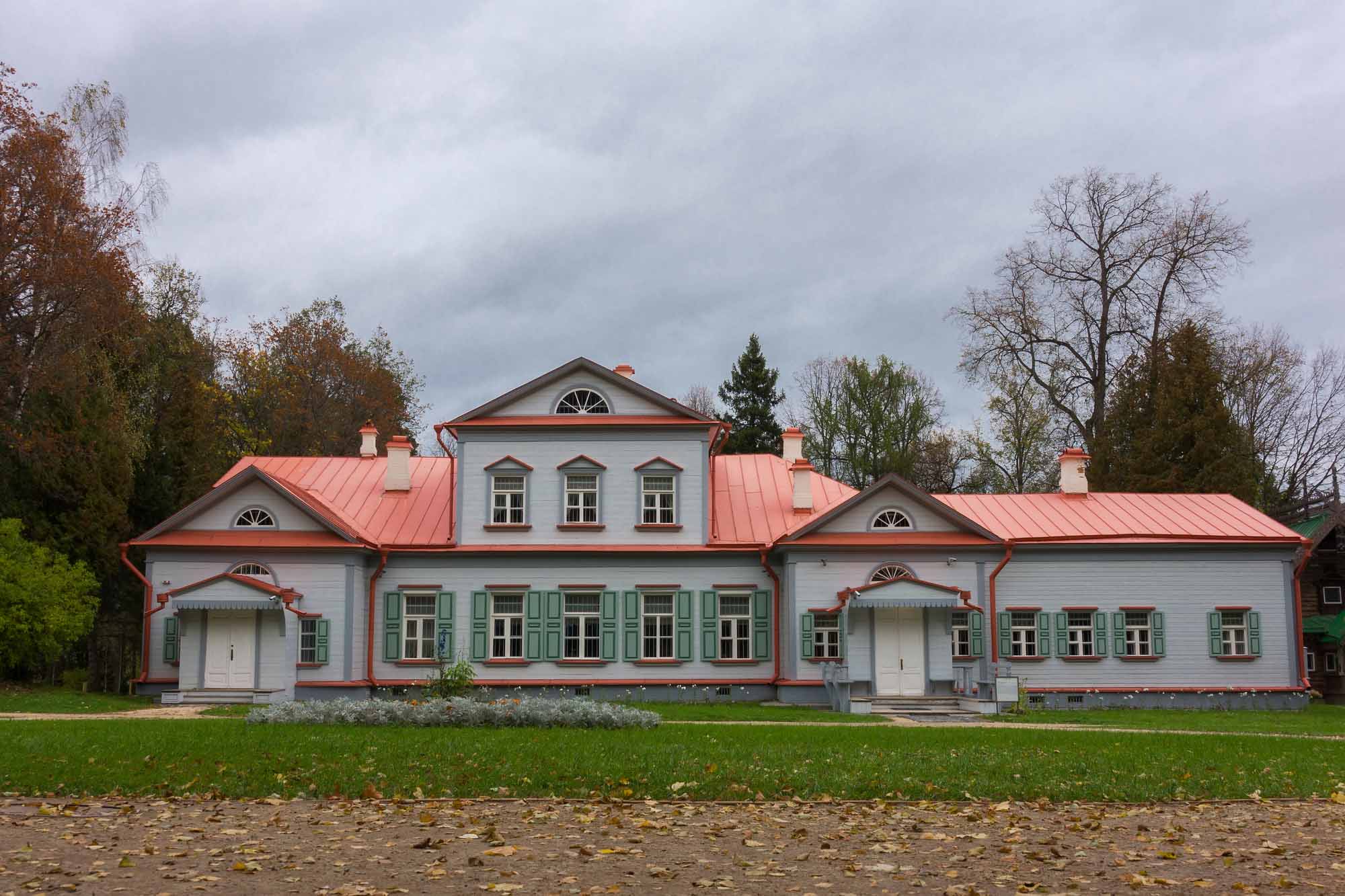
The Abramtsevo estate located between Moscow and Sergiev Posad was one of the most important centers of Russian cultural life in the second half of the XIX c.. In 1840s the owner of this country estate was writer Sergei Aksakov whose guests were famous Russian authors Nikolai Gogol and Ivan Turgenev. In 1870 Abramtsevo was bought by the industrialist and patron of arts Savva Mamontov and estate became a place of creation and relaxation of many prominent Russian painters: Victor Vasnetsov, Mikhail Vrubel, Vassily Polenov, Valentin Serov. Here Savva Mamontov formed his private opera company. Fyodor Chaliapin and Konstantin Stanislavsky took part in the performances in Abramtsevo. The interiors of the local Church of the Savior (1881-1882) built in style of the XII c. Novgorod temple were designed by Victor Vasnetsov, Vassily Polenov, Ilya Repin. The fair-tale and epic ancient Russia was represented in the works of prominent masters of the Silver Age in Abramtsevo. The collection of fairy-tale ceramic characters as well as the stoves are displayed in the Artist’s Studio constructed in 1872. The interior of a towered bathroom conveys very well the aura of ancient Russian buildings. In the park there is a peasant’s log hut built according to the sketches by Victor Vasnetsov as well as a multicolored majolica bench built according to the sketches of Mikhail Vrubel. The Abramtsevo estate located between Moscow and Sergiev Posad was one of the most important centers of Russian cultural life in the second half of the XIX c.. In 1840s the owner of this country estate was writer Sergei Aksakov whose guests were famous Russian authors Nikolai Gogol and Ivan Turgenev. In 1870 Abramtsevo was bought by the industrialist and patron of arts Savva Mamontov and estate became a place of creation and relaxation of many prominent Russian painters: Victor Vasnetsov, Mikhail Vrubel, Vassily Polenov, Valentin Serov. Here Savva Mamontov formed his private opera company. Fyodor Chaliapin and Konstantin Stanislavsky took part in the performances in Abramtsevo. The interiors of the local Church of the Savior (1881-1882) built in style of the XII c. Novgorod temple were designed by Victor Vasnetsov, Vassily Polenov, Ilya Repin. The fair-tale and epic ancient Russia was represented in the works of prominent masters of the Silver Age in Abramtsevo. The collection of fairy-tale ceramic characters as well as the stoves are displayed in the Artist’s Studio constructed in 1872. The interior of a towered bathroom conveys very well the aura of ancient Russian buildings. In the park there is a peasant’s log hut built according to the sketches by Victor Vasnetsov as well as a multicolored majolica bench built according to the sketches of Mikhail Vrubel.
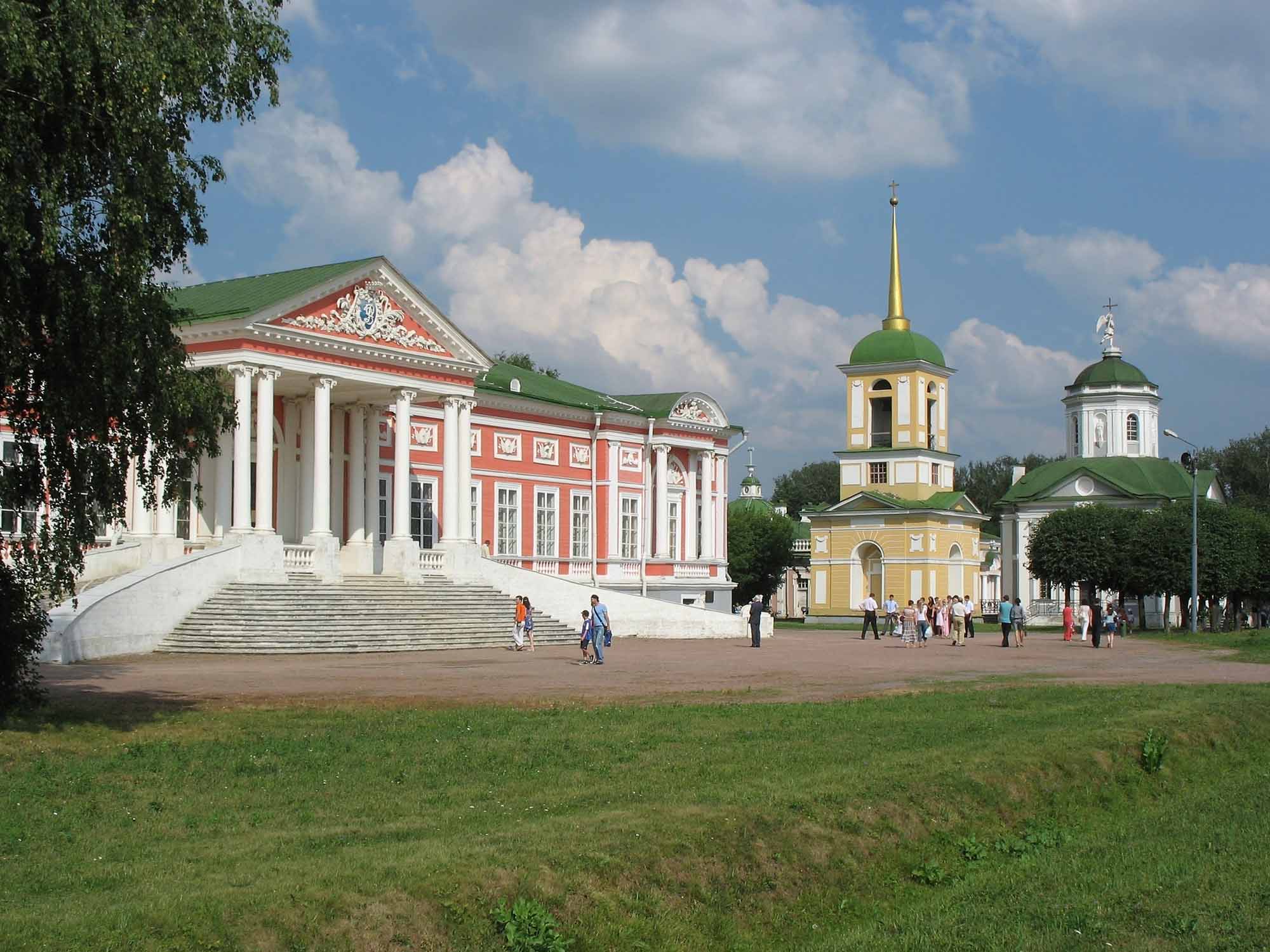
Estate of counts Sheremetev’s Kuskovo created in 1750s-1770s is one of the most celebrated summer palaces of old Russian aristocracy in Moscow. A wooden palace built in 1774 for few season’s amusement and having lasted for over 200 years provides visitors with tremendous perception of mentality and penetration into the lifestyle of Russian nobility in the XVIII-early XX cc.. You can see cultivated French terraces with statues, pavillions and grottos and a natural park with ponds, bridges and amusements here. Unique collection of Russian and Western European porcelain, earthenware, ceramics, glass and rock crystal is exhibited at the American Orangerie.
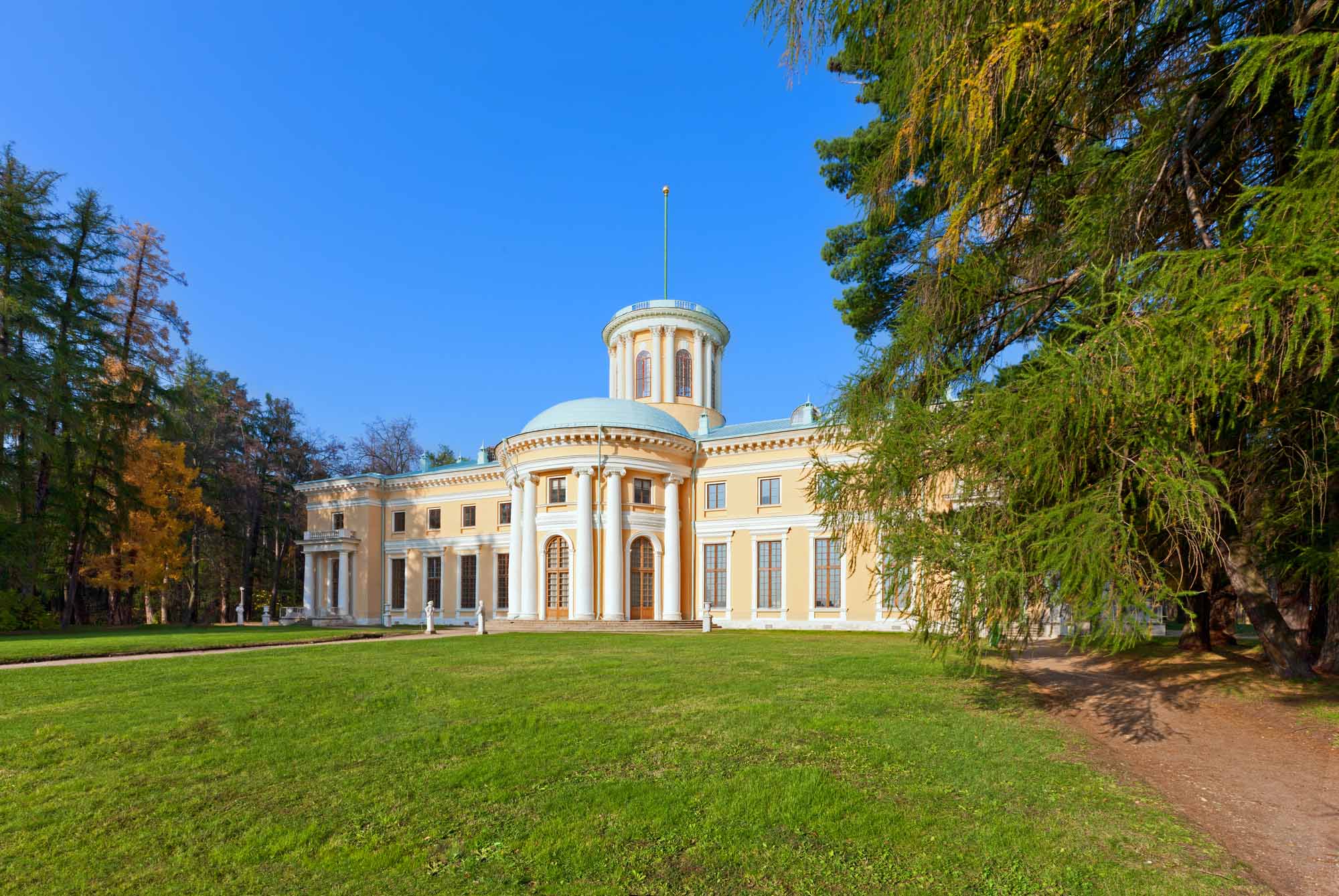
Arkhangelskoye is an actual pearl of the Moscow region, a beautiful estate ensemble and an interesting museum. At different times this estate belonged to the princely families of Odoyevsky, Golitsin and Yusupov. Magnificent palace was built in the classical style in 1780s-1790s. Its southern facade faces the regular park descending in terraces to the Moscow River oxbow lake. The last owner of the estate was Felix Yusupov known as an active participant of murder of Grigory Rasputin. Pompous family shrine was built under him. Since the first years of Soviet power Arkhangelskoye estate belonged to the Ministry of Defense. Leon Trotsky liked this place very much. Previously Soviet generals lived just at the palace but then gigantic and luxurious sanatoria block was additionally built and the view from the Palace to the Moscow River oxbow lake was closed.